Home — Essay Samples — Government & Politics — Transportation — Food Miles and Their Environmental Impact

Food Miles and Their Environmental Impact
- Categories: Transportation
About this sample

Words: 1742 |
Published: Sep 25, 2018
Words: 1742 | Pages: 3 | 9 min read
Table of contents
Introduction, road transportation factor, production footprint factor, methodology.
- I visited two malls - Inorbit mall and Infinity 2 mall both in Malad, Mumbai. My main purpose to visit these malls is because of the presence of giant hypermarkets such as Big Bazaar and Star Bazaar.
- Through secondary research, I gathered and analyzed data from the past which dealt with consumer taste and preferences for vegetables and other food items, in Mumbai.
Food miles in perspective

Cite this Essay
Let us write you an essay from scratch
- 450+ experts on 30 subjects ready to help
- Custom essay delivered in as few as 3 hours
Get high-quality help

Verified writer
- Expert in: Government & Politics

+ 120 experts online
By clicking “Check Writers’ Offers”, you agree to our terms of service and privacy policy . We’ll occasionally send you promo and account related email
No need to pay just yet!
Related Essays
3 pages / 1306 words
2 pages / 957 words
2 pages / 1127 words
4 pages / 1977 words
Remember! This is just a sample.
You can get your custom paper by one of our expert writers.
121 writers online
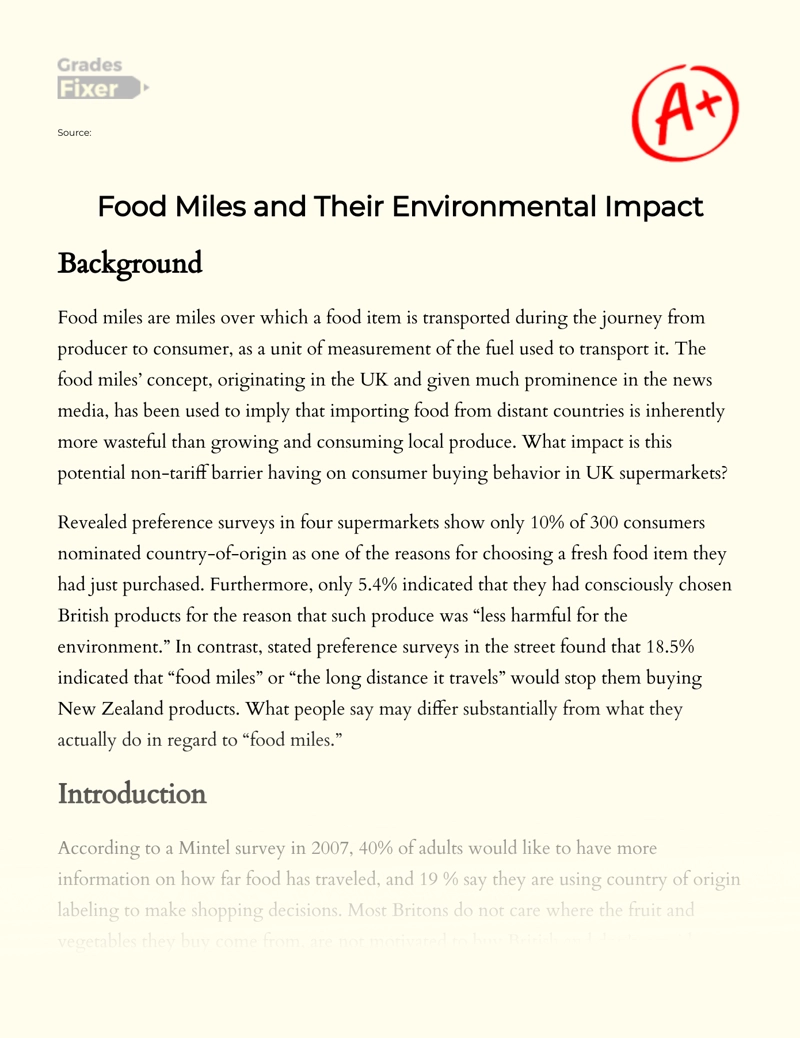
Still can’t find what you need?
Browse our vast selection of original essay samples, each expertly formatted and styled
The term "national road" carries significant historical and infrastructural importance, symbolizing the interconnectedness of a nation's regions and the evolution of transportation systems. Often referred to as a lifeline of [...]
As I walked into the airport terminal, I was struck by the sheer size and complexity of this modern transportation hub. From the bustling crowds of travelers to the gleaming planes parked on the tarmac, every detail seemed to [...]
Transportation In The 1800s: A Journey Through TimeImagine a world without cars, airplanes, or high-speed trains. A world where the only means of transportation were horse-drawn carriages, steamboats, and locomotives. This was [...]
The 1920s was a decade of rapid growth and change in the United States. One of the most significant areas of development during this time was transportation. The 1920s saw the rise of the automobile as the dominant mode of [...]
Though Kerala is receives high rainfall in the order of 3000mm per annum, the temporal variations in its occurrence leads to acute water scarcity during the non-monsoon periods. About 50% of the population in urban area and 80% [...]
Southwest Airlines is a company built with heart in mind and with the spirit to fly in his soul. As the late Herb Kelleher famously said, “if you don’t change you die.” I believe Herb built Southwest Airlines on this mantra as [...]
Related Topics
By clicking “Send”, you agree to our Terms of service and Privacy statement . We will occasionally send you account related emails.
Where do you want us to send this sample?
By clicking “Continue”, you agree to our terms of service and privacy policy.
Be careful. This essay is not unique
This essay was donated by a student and is likely to have been used and submitted before
Download this Sample
Free samples may contain mistakes and not unique parts
Sorry, we could not paraphrase this essay. Our professional writers can rewrite it and get you a unique paper.
Please check your inbox.
We can write you a custom essay that will follow your exact instructions and meet the deadlines. Let's fix your grades together!
Get Your Personalized Essay in 3 Hours or Less!
We use cookies to personalyze your web-site experience. By continuing we’ll assume you board with our cookie policy .
- Instructions Followed To The Letter
- Deadlines Met At Every Stage
- Unique And Plagiarism Free

Food Miles: How Much Should We Care About Food Transport?
by Marina Baptista and Belinda Ng
The journey from producers to consumers has become increasingly longer in the past decade due to the formation of a more globalised food system. The average food product travels 2400 km (1500 miles) before reaching the consumer [1]. This is mostly because modern food systems put a great emphasis on lowering the immediate costs of production, which means food often travels from where production costs are lower and environmental standards are weaker to anywhere else in the globe where it can meet consumer demand.
To encapsulate this globalised nature of the food supply chain, the concept of “Food miles” was devised in 1994 by Professor Tim Lang. The distances travelled by foodstuffs from farm gate to consumer are generally measured as tonne-kilometres, i.e. the distance travelled in kilometres multiplied by the weight in tonnes for each foodstuff [2]. The longer the journey, the higher the CO2 emissions involved in the process.
The value of the concept is to make the environmental impacts of long-distance transportation visible over space and time for consumers. In doing so, the importance of buying locally sourced food in order to reduce carbon emissions from the food transportation process is substantiated [3]. An added benefit of this is to incentivise greater connection between consumers and food producers within the same geographic area [4]. Thus, food miles are powerfully embedded in wider discourses pertaining to a more sustainable alternative food system based on ‘localisation’ [4].
However, there are several limitations of food miles as a concept. Indeed transport is both energy-intensive and polluting, particularly when it comes to road transport or air freight. Nonetheless, long-distance travel only contributes a portion of total carbon emissions in the entire globalised food systems. For instance, in the US alone, the country responsible for the most transport emissions, food transport accounted for only around 5% of the household total food emissions [5, 6].
The stages of production and packaging can have an associated heavy footprint as well [7]. For instance, a study in 1998 showed that Swedish tomatoes had a higher carbon footprint than those imported from Spain, due to the energy required to operate greenhouses in Nordic climates [8]. Of course, the source of energy used in these greenhouses is an important factor to this conclusion. If the greenhouses were instead run by renewable energy sources the result of the study could have been different. Anyhow, this study illustrates how measuring the carbon footprint of a food product is rarely as straightforward as knowing where it came from.
In addition to looking at the different stages of our food supply chain we should also look into our food choices. The largest meta-analysis of global food systems to date, published in Science in 2018 by Joseph Poore and Thomas Nemeck, made it clear that animal-related foods tend to have a significantly higher footprint than plant-based products [9]. For most foods, particularly the great emitters, the study concluded that over 80% of their associated greenhouse gases emissions came from either land use or other farm-stage emissions, while transport accounted for less than 10% of the total emissions [9].
Making conscious purchasing decisions is a task that would be greatly enhanced by the provision of more accessible data about different food types and their sources. In conclusion, although the component of transportation remains important for consumers to consider, it should always be accounted for alongside other aspects as well. The energy source used in the stages of production, food packaging, and our food choices per se, are examples of other factors that are at least as important as food miles when considering how environmentally friendly our food is.
Marina is a second-year student in the Environmental Policy and Law master’s degree programme at the University of Eastern Finland, majoring in International and Climate Change Law. She is from Brazil, where she previously got her Bachelor of Laws degree and some practical experience in the legal field. She is particularly passionate about helping animals live better lives and a strong believer in individual contribution.
Belinda is a recent Geography graduate from the University of Cambridge. She is passionate about climate change issues in relation to food security and sustainability. She has led various sustainable food initiatives whilst at university, and is also the founder of a sustainability podcast called ‘sustain-a-pod’ back in her hometown of Hong Kong.
Tell us what you think! Cancel reply
This site uses Akismet to reduce spam. Learn how your comment data is processed .
Related Posts
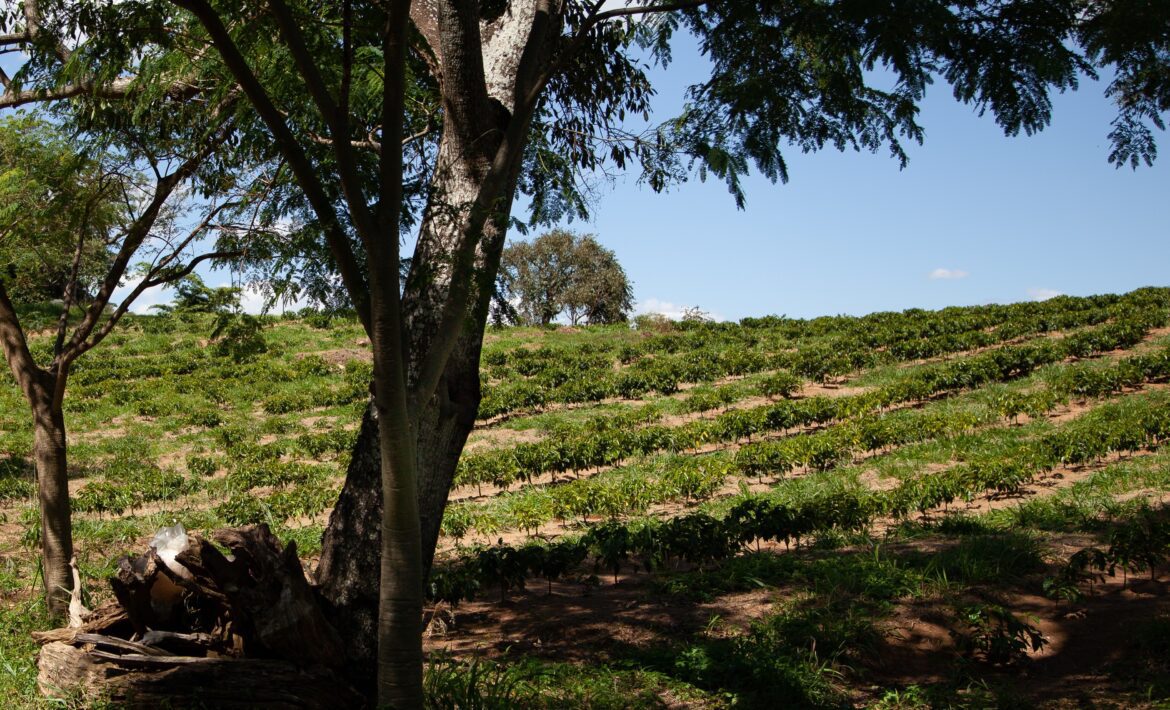
Agroforestry For Biodiversity And Climate Resilience
In addition to food production, modern agriculture must provide ecosystem services such as water quality,
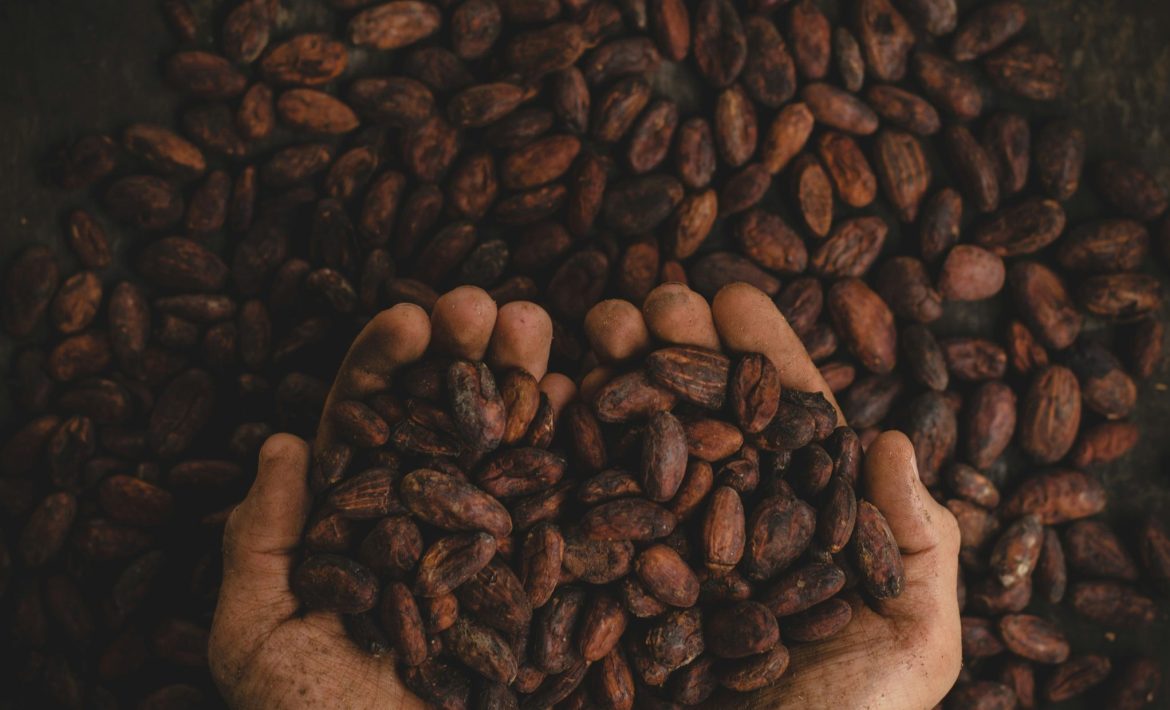
The Cocoa Industry: Its Environmental Impacts
The cocoa industry negatively impacts the environment across the whole value chain. The industry’s environmental
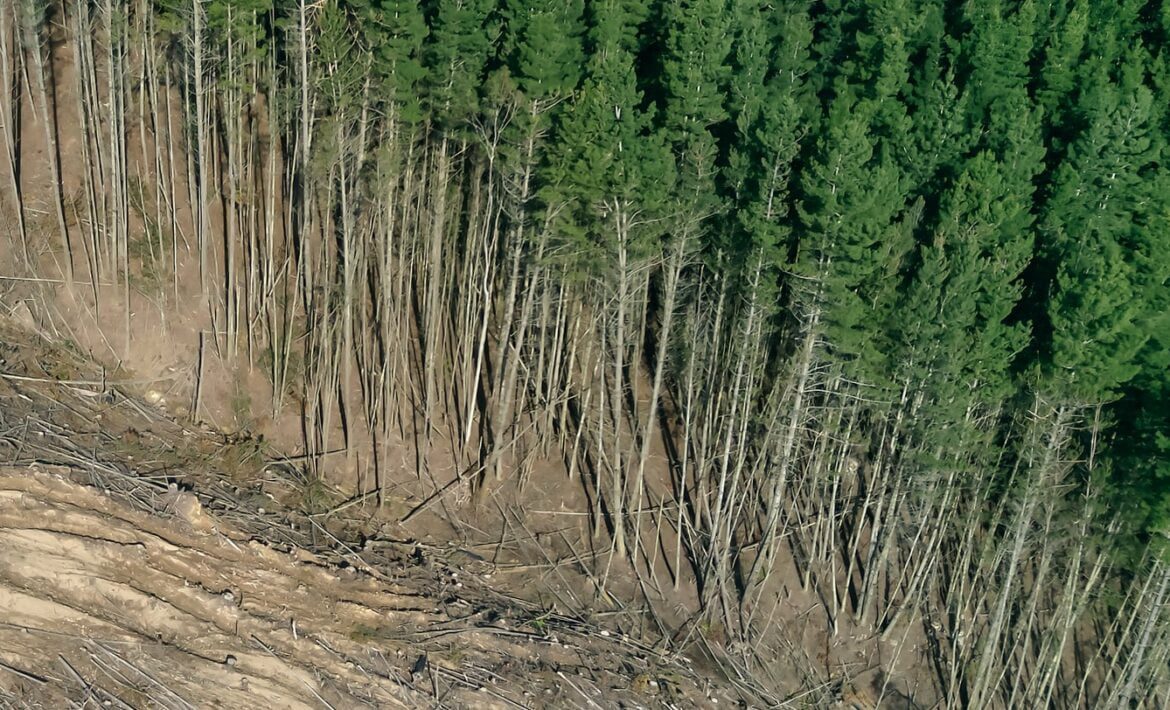
The Role Of Agriculture In Deforestation
Future food demands are projected to rise, yet deforestation compromises long term food security. The
- Climate modelling
- Extreme weather
- Health and Security
- Temperature
- China energy
- Oil and gas
- Other technologies
- China Policy
- International policy
- Other national policy
- Rest of world policy
- UN climate talks
- Country profiles
- Guest posts
- Infographics
- Media analysis
- State of the climate
- Translations
- Daily Brief
- China Briefing
- Comments Policy
- Cookies Policy
- Global emissions
- Rest of world emissions
- UK emissions
- EU emissions
- Global South Climate Database
- Newsletters
- COP21 Paris
- COP22 Marrakech
- COP24 Katowice
- COP25 Madrid
- COP26 Glasgow
- COP27 Sharm el-Sheikh
- COP28 Dubai
- Privacy Policy
- Attribution
- Geoengineering
- Food and farming
- Plants and forests
- Marine life
- Ocean acidification
- Ocean warming
- Sea level rise
- Human security
- Public health
- Public opinion
- Risk and adaptation
- Science communication
- Carbon budgets
- Climate sensitivity
- GHGs and aerosols
- Global temperature
- Negative emissions
- Rest of world temperature
- Tipping points
- UK temperature
- Thank you for subscribing
Social Channels
Search archive.

Receive a Daily or Weekly summary of the most important articles direct to your inbox, just enter your email below. By entering your email address you agree for your data to be handled in accordance with our Privacy Policy .
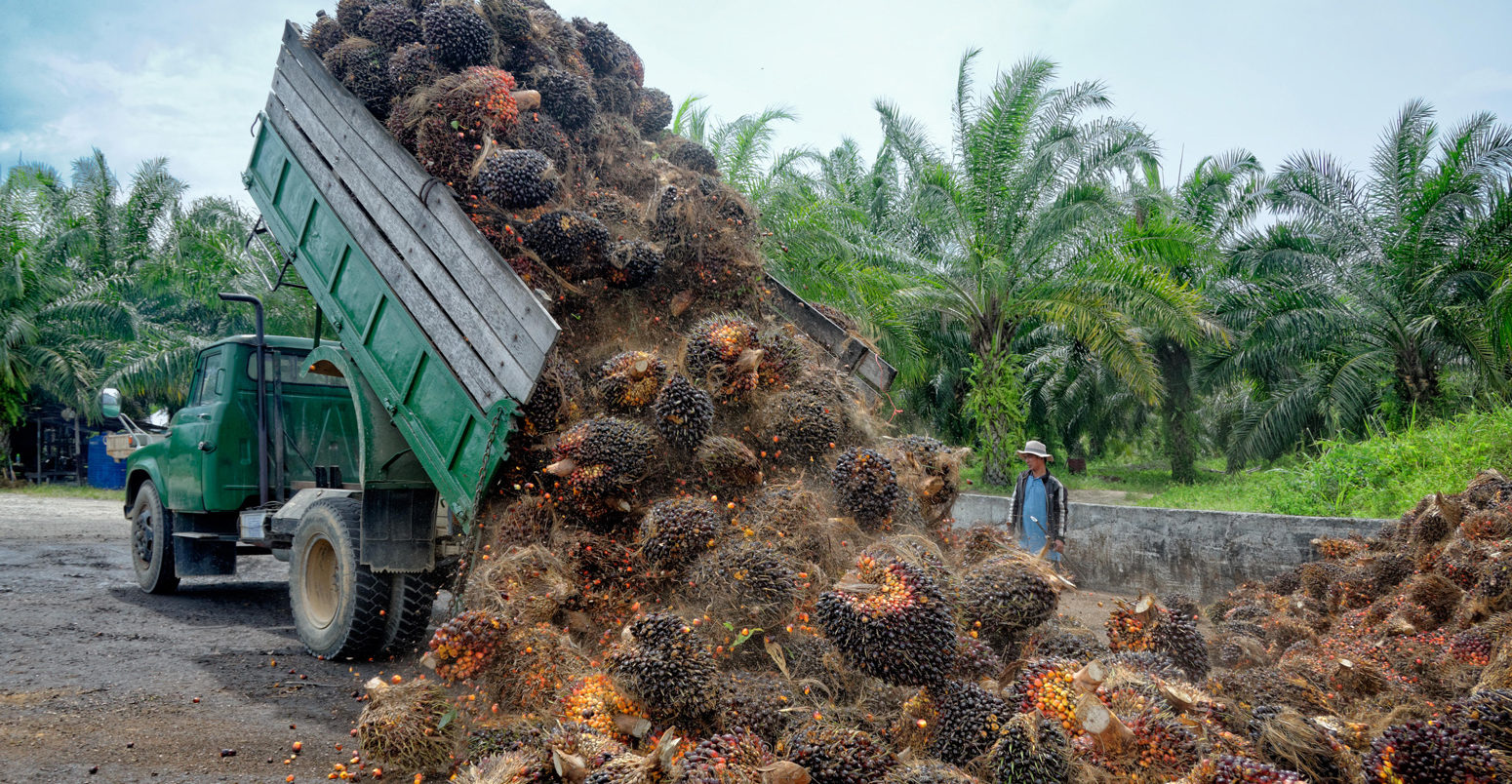
- ‘Food miles’ have larger climate impact than thought, study suggests

Ayesha Tandon
Global “food miles” emissions are higher than previously thought – accounting for nearly one-fifth of total food-system emissions – new research suggests.
The study, published in Nature Food , estimates the carbon footprint of the global food transport system. The authors assess the entire food supply chain – considering emissions from transporting fertilisers, machinery and animal feed as well as from moving the food itself.
They find that in a single year, global food miles were responsible for 3bn tonnes of CO2 equivalent emissions – 3.5-7.5 times larger than previous estimates.
“Food-miles emissions are driven by the affluent world,” the study says. It finds that while “high income nations” represent only about 12.5% of the world’s population, they are responsible for 52% of international food miles and 46% of the associated emissions.
The authors also reflect on the pros and cons of buying local food – an often-touted solution for reducing food emissions. The study showed that ending all international food transport would cut food-miles emissions by just 9%, highlighting the relatively greater importance of other dietary choices in tackling the climate impact of the sector.
As such, the lead author of the study tells Carbon Brief that while eating local does reduce emissions, this should be paired with eating seasonal produce and reducing meat consumption to limit dietary emissions.
This study presents “a significant deviation from the former scientific mainstream opinion that transport is no major contributor to emissions from the food system”, a scientist not involved in the research tells Carbon Brief. However, he adds that he would “interpret the results with caution”, as emissions may be overestimated in places.
The paper has triggered debate over the definition of the term “food miles”, which typically considers the distance from where the food is produced to where it is consumed, rather than encompassing the entire food supply chain.
‘Food miles emissions’
Feeding the world is an expensive undertaking. Food production uses up half of the Earth’s habitable land, and “food systems” – a catch-all term to describe the way humans produce, process, transport and consume food – are responsible for one third of all human-caused emissions.
Past studies suggest that transporting food has a small carbon footprint when compared to the rest of the food system. However, many do not to account for emissions throughout the entire food supply chain. The new study aims to fill this gap and includes emissions from transporting fertilisers, machinery and animal feed as well as the more obvious shipping and vehicle emissions from sending food products around the world.
The authors consider 74 regions, 37 economic sectors such as chemicals and machinery, and four transportation modes. They then use a “multi-region input–output model” to assess the emissions produced by transporting food and other components of the food system across the entire supply chain. This is referred to as “food-system miles”.
The plot below shows total food-system miles in “tonne-kilometres”, indicating the distance travelled per tonne of food, on the left. The central figures show the resulting emissions. And total food system emissions, including emissions from land-use change, food production, transportation and consumption, are shown on the right.
Each graphic is split into sectors, including components of the food system such as meat (pink), and dairy (white), as well as related sectors such as manufacturing (dark blue). The bottom panel splits each component into “domestic” (left of the zero line) and “international” (right) emissions and miles travelled.
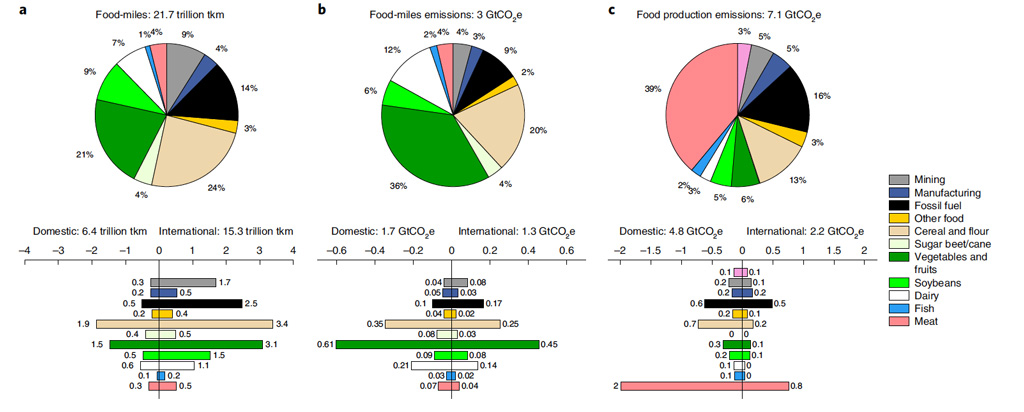
Maintaining the current global food system requires food and related equipment to be transported a total of 22tn “tonne-kilometres” per year, according to the study. This drives 3bn tonnes of CO2 equivalent (CO2e), accounting for almost one-fifth of total food system emissions, it finds.
Dr Ulrich Kreidenweis – a researcher at the Leibniz Institute of Agricultural Engineering and Bio-economy , who was not involved in the study – tells Carbon Brief that the new study presents “a significant deviation from the former scientific mainstream opinion that transport is no major contributor to emissions from the food system”.
For example, a study published last year finds that transport is responsible for only 4.8% of total food system emissions. However, this study includes refrigeration separately, stating that the “cold chain” of keeping food in a temperature-controlled environment throughout transit and sales accounts for 5% of global food system emissions.
“Investigating transportation emissions along the whole global food supply chain is an important step in understanding food-mile emissions”, adds Dr Paul Behrens , an assistant professor at Leiden University , who was also not involved in the paper. He tells Carbon Brief that this paper presents “the first estimate of its kind”.
It is well known that meat production is highly carbon intensive , requiring extensive stretches of land for rearing livestock and producing animal feed. As expected, the plot from the study shows that meat is responsible for almost two-fifths of total food system emissions – far outstripping any other food type. However, meat accounts for only 4% of all food transport emissions.
Meanwhile, fruits and vegetables are responsible for one-fifth of global food miles, but account for over one-third of transport emissions. This is because fruits and vegetables require energy-intensive refrigeration throughout their journey, and weigh a lot compared to other food types, the study explains.
Global supply chain
The global food system is complex and interlinked. Producing red meat consumed in China, for example, can involve production steps from almost every continent on the planet.
The plot below shows an example of these steps, including machinery, manufacturing and the chemicals required to produce animal feed. Bubbles present food production emissions, while arrows represent the food-miles emissions.
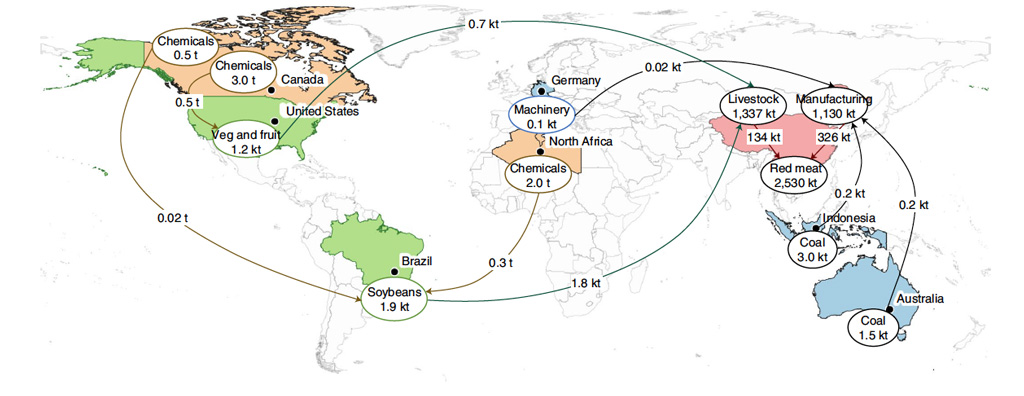
To produce red meat for consumption in China, chemicals from Canada are sent to the US by road to grow fruits and vegetables, and to Brazil by ship to grow soybeans. These are used to feed livestock in China. Meanwhile, coal imported from Australia and Indonesia is used for manufacturing, along with machinery from Germany.
To map food-mile flows across the entire global supply-chain network, the authors were required to model more than 30m direct trade connections. The plot below shows the top 100 bilateral flows – from one country to another – of international food-miles emissions (top) and the same per person (bottom). Thicker arrows indicate greater emissions.
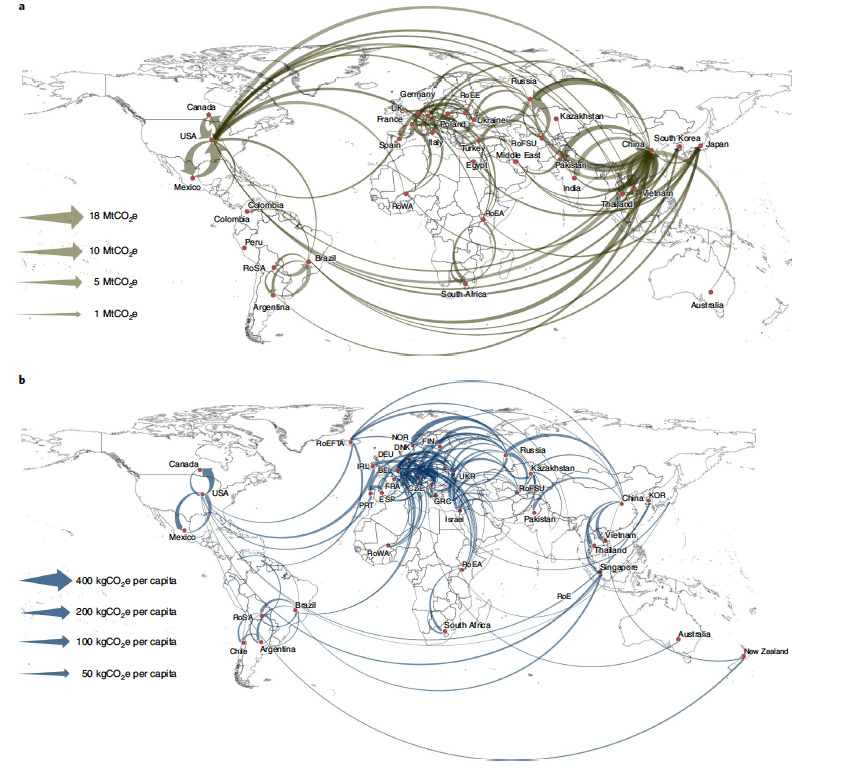
The plot highlights some of the hotspots of trading activity in certain regions – for example, in Europe and China – while others see less traffic. Most notable is the lack of trading with countries in Africa.
“Food-miles emissions are driven by the affluent world,” the study states. The authors find that high-income countries – where per-capita GDP is above US$25,000 – represent only about 12.5% of the world’s population, but drive around half of international food miles and emissions.
Meanwhile, representing about half of the global population, low-income countries with per-capita GDP below US$3,000 are responsible for only 12% and 20% of international food miles and emissions, respectively, the study finds. It adds:
“High-income regions, including Oceania, Europe and North America, clock up per-capita food miles and emissions 2.7–2.8 times that of other aggregated broad regions.”
Dr Mengyu Li from the University of Sydney is the lead author of the study. She explains that high per-capita emissions in rich counties are in part due to the wide choice of food available there. For example, she notes “the year-round habit of consumers in rich countries for non-seasonal food products that need to be shipped from elsewhere” – which is less prevalent in poorer countries.
Expert analysis direct to your inbox.
Get a round-up of all the important articles and papers selected by Carbon Brief by email. Find out more about our newsletters here .
Meanwhile, countries with high populations and large land areas generally have the highest domestic emissions, the study finds. It notes that two-thirds of domestic emissions come from China, India, the US and Russia.
Buying local
Buying locally sourced food is often touted as an easy way to reduce dietary emissions. However, the paper finds that while international transport drives 71% of food miles, domestic transport emissions are 1.3 times higher overall. This is because 93% of international food transport relies on shipping, which has a relatively low carbon intensity, the study says, while 94% of domestic transportation is caused by more polluting road transport. Meanwhile, the authors find that less than 0.25% of “freight tasks” moved by air.
Nevertheless, switching to a local diet can still reduce emissions – especially in richer countries. The authors found that if the entire world were to switch to a purely domestic food supply, food-miles emissions would be reduced by a modest 0.27bn tonnes of CO2 equivalent. They add that 0.24bn tonnes of this would come from high-income countries.
Carbon Brief asked lead author Li whether eating local is still a useful way to combat food emissions. She says that “localising food supply still leads to emissions reductions”, but adds:
“For consumers, in addition to shifting towards a plant-based diet, eating local seasonal alternatives is ideal, especially among affluent countries.”
The paper “really emphasises the importance of electrifying goods vehicles, switching to rail and/or moving food production closer to population centres,” Behrens tells Carbon Brief. He adds that the paper “combines an impressive set of different data sources in a novel way”.
However, Kreidenweis says that he “would interpret the results with caution”, as the authors “have taken several decisions that may lead to a strong overestimation of food-miles emissions”. For example, he says that the mass of food transported and emissions from some modes of transport may be overestimated.
For example, he says, the study assumes that 99.4% of domestic coal transport happens by road, whereas in reality, trains transport nearly 70% of coal deliveries in the US at least part of the way from mines to consumer.
Li et al (2022), Nature Food. Global food-miles account for nearly 20% of total food-systems emissions. doi:10.1038/s43016-022-00531-w Update: This piece was updated on 24/06/2022 to include a line on the debate around the term “food miles” that the paper has triggered.

Encyclopedia of Food and Agricultural Ethics pp 1175–1180 Cite as
- James McWilliams 3
- Reference work entry
- First Online: 01 January 2019
36 Accesses
Introduction
The concept of food miles has been relevant for as long as humans have swapped food. Every bill of lading archiving the contents of every inbound ship was an implicit reference to a point of origin and, therefore, a record of the distance food traveled. Not incidentally, in most cases, the further afield a particular good originated from the point of consumption, the more it was valued for its exotic qualities. Throughout most of human history, the market rewarded distance and novelty. The more miles traveled, the better.
By the late twentieth century, popular evaluations of food production had shifted into the new framework of global sustainability. An emerging emphasis on the environmental consequences of food production, initially inspired by Rachel Carson’s Silent Spring (1962), fostered critical changes in how consumers evaluated responsibly produced food. Perhaps most notably, consumers now took an interest in reducing the distance food traveled between “farm and...
This is a preview of subscription content, log in via an institution .
Buying options
- Available as PDF
- Read on any device
- Instant download
- Own it forever
- Available as EPUB and PDF
- Durable hardcover edition
- Dispatched in 3 to 5 business days
- Free shipping worldwide - see info
Tax calculation will be finalised at checkout
Purchases are for personal use only
(n.a.). (n.d.). Livestock emissions: Still grossly underestimated? Worldwatch Institute. Retrieved from http://www.worldwatch.org/node/ . Accessed 25 May 2013.
Allen, P. (1999). Reweaving the food security safety net: Mediating entitlement and entrepreneurship. Agriculture and Human Values, 16 , 120–122.
Article Google Scholar
Barber, A., Taylor, G., & Saunders, C. (2006, July). Food miles – Comparative energy/emissions performance of New Zealand’s agriculture industry (Research rep. no. 285). New Zealand: Lincoln University. Retrieved from http://www.lincoln.ac.nz/documents/2328_rr285_s13389.pdf . Accessed 24 May 2013.
Barclay, C. (2012). Food miles. Standard note SN/SC/4984, science and environment section, House of commons library.
Google Scholar
Black, J. (2008, September 17). What’s in a number? Slate.com . Retrieved from http://www.slate.com/articles/life/food/2008/09/whats_in_a_number.html
Blanke, M. M., Burdick, B., & Gallon. (2005). Energy use comparison of local and globally sourced food. Environmental Science and Pollution Research International, 12 (3), 125 Retrieved from http://www.ncbi.nlm.nih.gov/pubmed/15986993/ .
Desrochers, P., & Shimizu, H. (2012). The locavore’s dilemma: In praise of the 10,000-mile diet. Public Affairs, 9 . Retrieved from http://www.org/ag/magazine/0612sp1.htm . Accessed 25 May 2013.
DeWeert, S. (2009, May/June). Is local food better? Worldwatch Institute , 22 (3). Retrieved from http://www.worldwatch.org/node/6064
Hinrichs, C. (2003). The practice and politics of food system localization. Journal of Rural Studies, 19 (1), 33–45.
Hurst, B. (2009, July 30). The omnivore’s delusion: Against the agri-intellectuals. The American . Retrieved from http://www.american.com/archive/2009/july/the-omnivore2019s-delusion-against-the-agri-intellectuals . Accessed 24 May 2013.
Jones, P., et al. (2004). A case study of local food and its routes to market in the UK. British Food Journal, 106 (4), 328–335.
Lang, T. (2005, August 3). Origin unknown. The Guardian. Retrieved from http://www.theguardian.com/politics/2005/aug/03/greenpolitics.foodanddrink
McWilliams, J. (2012, April 22). All sizzle and no steak: Why Allan Savory’s TED talk about how cattle can reverse global warming is dead wrong. Slate.com . Retrieved from http://www.slate.com/articles/life/food/2013/04/allan_savory_s_ted_talk_is_wrong_and_the_benefits_of_holistic_grazing_have.html . Accessed 25 May 2013.
Oppenlander, R. A. (2011). Comfortably unaware: Global depletion and food responsibility (p. 125). Minneapolis: Langdon Street Press.
Pirog, R. (2001, June). Food, fuel, and freeways: An Iowa perspective on how far food travels, fuel usage, and greenhouse gas emissions . Leopold center for sustainable studies, Iowa State University at Ames. Retrieved from http://www.leopold.iastate.edu/pubs-and-papers/2001-06-food-fuel-freeways
Roosevelt, M. (2006, June 11). The local-food movement: The lure of the 100-mile diet. Time Magazine. Retrieved from http://www.time.com/time/magazine/article/0,9171,1200783,00.html
Safire, W. (2008, October 12). On language: Locavorism. The New York Times Magazine , 18. Retrieved from http://www.nytimes.com/2008/10/12/magazine/12wwln-safire-t.html?_r=0
Shiva, V. (Ed.). (2007). Manifestoes on the future of food and seed (p. 29). Cambridge, MA: South End Press.
Weber, C. L., & Matthews, H. S. (2008). Food-miles and the relative climate impacts of food choices in the United States. Environmental Science and Technology, 42 (10), 3508–3513. Retrieved from http://pubs.acs.org/doi/full/10.1021/es702969f . Accessed 25 May 2013.
Wilkins, J. (2009). Eating right here: The role of dietary guidance in remaking community-based food systems. In C. Hinrichs & T. A. Lyson (Eds.), Remaking the North American food system (p. 174). Nebraska: University of Nebraska Press.
Wolf, M. M. G., Spittler, A., & Ahern, J. (2005). A profile of farmers’ market consumers and the perceived advantages of produce sold at farmers’ markets. Journal of Food Distribution Research, 36 (1), 192.
Download references
Author information
Authors and affiliations.
Department of History, Texas State University, San Marcos, TX, USA
James McWilliams
You can also search for this author in PubMed Google Scholar
Corresponding author
Correspondence to James McWilliams .
Editor information
Editors and affiliations.
Department of Philosophy and Religion, University of North Texas, Denton, TX, USA
David M. Kaplan
Rights and permissions
Reprints and permissions
Copyright information
© 2019 Springer Nature B.V.
About this entry
Cite this entry.
McWilliams, J. (2019). Food Miles. In: Kaplan, D.M. (eds) Encyclopedia of Food and Agricultural Ethics. Springer, Dordrecht. https://doi.org/10.1007/978-94-024-1179-9_250
Download citation
DOI : https://doi.org/10.1007/978-94-024-1179-9_250
Published : 27 June 2019
Publisher Name : Springer, Dordrecht
Print ISBN : 978-94-024-1178-2
Online ISBN : 978-94-024-1179-9
eBook Packages : Religion and Philosophy Reference Module Humanities and Social Sciences Reference Module Humanities
Share this entry
Anyone you share the following link with will be able to read this content:
Sorry, a shareable link is not currently available for this article.
Provided by the Springer Nature SharedIt content-sharing initiative
- Publish with us
Policies and ethics
- Find a journal
- Track your research

Food Miles: Background and Marketing
By Holly Hill, NCAT Research Specialist
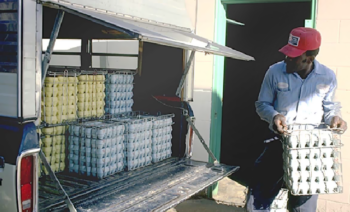
Eggs loaded for trucking to market near Chesterfield, SC. Photo by Dave Warren. Courtesy of USDA.
The term food miles refers to the distance food travels from the location where it is grown to the location where it is consumed, or in other words, the distance food travels from farm to plate. Recent studies have shown that this distance has been steadily increasing over the last 50 years. Studies estimate that processed food in the United States travels over 1,300 miles, and fresh produce travels over 1,500 miles, before being consumed. This publication addresses how food miles are calculated, investigates how food miles affect producers and consumers, and evaluates methods for curbing the energy intensiveness of our food transportation system.
Introduction
The food mile is a fairly new concept referring to the distance food travels from the location where it is produced to the location where it will eventually be consumed. Food miles have become one method for evaluating the sustainability of the global food system in terms of energy use. This concept has received an increasing amount of attention over the last decade as climate change patterns have become ever more apparent. This publication investigates the amount of energy invested in food transportation, addresses how food miles affect both producers and consumers and suggests possibilities for creating a more sustainable food system.
The United States food system has changed substantially over the last 50 years due to a large variety of circumstances including the globalization and centralization of the food industry and the concentration of the food supply onto fewer, larger suppliers.
A report released in 1998 by the USDA found that 80% of the meat industry is controlled by only four firms.(1) In his essay entitled “Food Democracy,” Brian Halweil states that half of the food items in a typical supermarket are produced by no more than 10 multinational food and beverage companies.(2) The majority of food consumed today passes through a complex, indirect network of a few large, centralized producers, processors, transporters and distributors before reaching the consumer.
An additional change in the food system is the increasing trend of these multinational firms sourcing food from outside of regional, state and even national boundaries in order to provide consistent products at low prices. Figure 1 illustrates the steady increase in world agricultural trade between 1961 and 2000.(3)
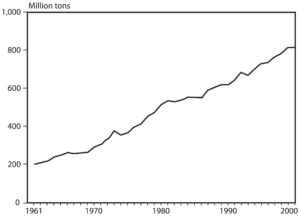
Figure 1. Volume of World Agricultural Trade, 1961-2000. Source: Brian Halweil. Home Grown: The Case for Local Food in a Global Market. 2002.
The development of global food transport systems has resulted in higher consumer expectations. Consumers now have the ability to choose from a wide variety of food items, regardless of the season or their location, all at a low price.
The ability to enjoy consistent produce and exotic ingredients at all times of the year is a luxury that, according to many food system analysts, has its price. The farther food travels and the longer it takes en route to the consumer, the more freshness declines and the more nutrients are lost. Many fruits and vegetables are engineered for a long shelf life, sacrificing taste and nutrition for preservation.
As large multinational companies gain control over the food industry, small local farmers suffer. Since 1979, 300,000 farmers have gone out of business and those remaining are receiving 13% less for every consumer dollar for farm goods.(1) Large distributors are able to drive prices down on imported goods, forcing many small farms to either export their crop as a raw commodity or replace regional crops with something more profitable. For example, in 1870 100% of the apples consumed in Iowa were produced in Iowa. By 1999, Iowa farmers grew only 15% of the apples consumed in the state.(4) This phenomenon limits the potential for local self-sufficiency and increases dependency on outside sources.
Changes in the food system have resulted in a broad range of social and economic implications, but the present food system also has an environmental cost. The farther food travels, the more fossil fuels are required for transport. The burning of fossil fuels leads to the emission of greenhouse gases, which contribute to global warming. The following sections will investigate the extent to which food miles contribute to high energy consumption levels and CO2 emissions.
The Energy Embedded in Our Food
The carbon footprint of the food system.
While studies vary, a typical estimate is that the food industry accounts for 10% of all fossil fuel use in the United States.(5) Of all the energy consumed by the food system, only about 20% goes towards production; the remaining 80% is associated with processing, transport, home refrigeration, and preparation.
Recent research at the University of Chicago has investigated the energy consumption of the food system and compared it to the energy consumption associated with personal transportation in the United States. Personal transportation is often recognized as a major contributor to greenhouse gas emissions, as evident in the movement towards higher efficiency vehicles. This study found, however, that the average American uses between 170 and 680 million BTUs of energy in personal transportation annually and roughly 400 million BTUs in food consumption.(6) The food industry accounts for a considerable portion of energy consumption in the United States and merits closer evaluation.
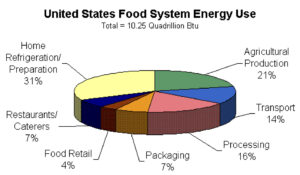
Figure 2. Transportation accounts for 14% of energy use within the food system. Source: Heller and Keoleian. Life Cycle-Based Sustainability Indicators for Assessment of the U.S. Food System. 2000.
According to one study, food transportation accounts for 14% of energy use within the food system. Figure 2 demonstrates the energy use required for each step of the food industry process.(7) Food miles, although a fraction of the U.S. energy consumption as a whole, remain a considerable source of carbon emissions, especially when considering that the United States is the single largest emitter of greenhouse gases in the world, accounting for 23% of the global total at nearly 1,600 million metric tons annually.
The U.S. food system alone uses as much energy as France’s total annual energy consumption.(8)
Calculating Food Miles
How far does food travel.
The Leopold Center for Sustainable Agriculture has been the leading researcher of food miles in the United States and has conducted several studies comparing the distance food travels if it is sourced locally rather than conventionally. A 1998 study examined the distance that 30 conventional fresh produce items traveled to reach the Chicago Terminal Market.
The Leopold Center found that only two food items, pumpkins and mushrooms, traveled less than 500 miles. Six food items including grapes, lettuce, spinach, broccoli, cauliflower and green peas traveled over 2,000 miles to reach the Chicago market. The average distance traveled amounted to 1,518 miles.(9) Figure 3 shows the distance that select produce items traveled before reaching their destination at the Chicago Terminal Market.
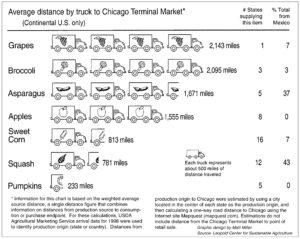
Figure 3. Distance Produce Traveled to Reach Chicago Market. Source: Leopold Center for Sustainable Agriculture
Another study conducted in the Waterloo Region of Southwestern Ontario investigated the food miles associated with 58 commonly eaten, imported foods. The study found that each food item traveled an average of 4,497 kilometers or 2,811 miles, producing 51,709 tons of greenhouse gas emissions annually.(10)
These calculated distances don’t include the distance consumers travel to shop for food or the distance that waste food travels to be disposed of. It is apparent that food is traveling long distances, but the extent to which food miles have an effect on the environment is more complex. The following sections will cover the formulas used to calculate food miles and investigate the energy involved in the transportation of food.
How Are Food Miles Calculated?
A series of formulas for calculating food miles has been developed and has become widely accepted. Calculating the distance a food item has traveled varies in complexity depending on whether the item is made up of a single ingredient or multiple ingredients and the mode of transportation used to carry the item.
The Weighted Average Source Distance (WASD) formula was developed by Annika Carlsson-Kanyama in 1997 and takes into account the amount of food transported in weight and the distance that it travels from the place of production to the place of sale. Fruits and vegetables and other items consisting of only one ingredient would utilize the WASD formula for calculating food miles.
The Weighted Total Source Distance (WTSD) formula was developed by the Leopold Center for Sustainable Agriculture and accounts for multiple-ingredient foods by calculating the weight and distance traveled for each ingredient. Foods like flavored yogurt, bread, and other processed foods would employ the WTSD formula for calculating food miles.
While both WASD and WTSD convey an estimate of the distance food travels between the producer and consumer, neither formula addresses greenhouse gas emissions associated with this distance traveled. The Weighted Average Emissions Ratio (WAER) formula takes into account both distance and the associated greenhouse gas emissions for different modes of transportation. This formula was developed by the nonprofit organization LifeCycles, in 2004.
For detailed information about food miles formulas and calculating food miles, see the Leopold Center’s publication, Calculating Food Miles for a Multiple Ingredient Food Product .
Mode of Transportation
As suggested by the Weighted Average Emissions Ratio formula, the mode by which food is transported is an important factor when considering the environmental impact of food miles. A food item traveling a short distance may produce more CO2 than an item with high food miles, depending on how it is transported.
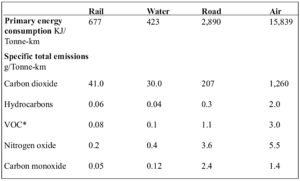
Figure 4. Energy use and emissions for different modes of freight transport. Source: Transport for a Sustainable Future: The Case for Europe.(11)
Figure 4 contains the estimated values of energy consumption and greenhouse gas emissions for four different transportation modes measured in the UK.(11) Air transportation is, by far, the most energy intensive means of transporting food and other goods.
A study released in the UK in 2005 found that air transport is the fastest growing mode of food distribution and although air transport accounts for only 1% of food transport in the UK, it results in 11% of the country’s CO2 emissions. The UK report also estimated that the social and economic costs of food transport including accidents, noise and congestion amount to over 9 billion British pounds every year or 18 billion American dollars.(12)
Food Miles and Energy
Is local food less energy intensive.
Proponents of reducing food miles often suggest that buying local food will reduce the amount of energy involved in the transportation process, as food sourced locally travels shorter distances. The Leopold Center for Sustainable Agriculture has conducted several studies that compare the distance traveled by conventional versus local foods. Figure 5, compiled by the Leopold Center, compares food miles for local versus conventional produce traveling to Iowa. In all cases, the locally grown food travels a significantly shorter distance than the conventionally sourced food.
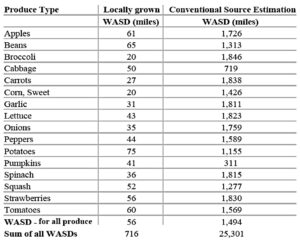
Figure 5: Food miles for local versus conventional produce. Source: Leopold Center for Sustainable Agriculture.e
Another study conducted by the Leopold Center in 2001 investigated the distance that food traveled to institutional markets such as hospitals and restaurants in Iowa using three different food sources: conventional, Iowa-based regional and Iowa-based local. The study found that food sourced from the conventional system used 4 to 17 times more fuel than the locally sourced food and emitted 5 to 17 times more CO2.(4) The Leopold Center used this information to estimate the distance, fuel consumption and CO2 emissions that could potentially be saved by replacing 10% of the Iowa’s current food system with regional or locally sourced food. This information is displayed in Figure 6. It is interesting to note that when the transportation method was taken into account, the local food system required more energy and emitted more CO2 than the regional system. This is because the trucks supplying food locally had a smaller capacity, therefore requiring more trips and logging more miles.
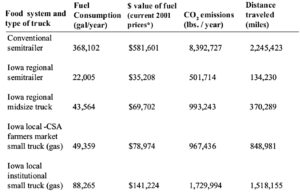
Figure 6: Estimated fuel consumption, CO2 emissions and distance traveled for conventional, Iowa-based regional, and Iowa-based local food systems for produce. Source: Leopold Center for Sustainable Agriculture
It has been shown that local food systems do reduce food miles, which in turn tend to reduce energy consumption, but there are exceptions. Local transportation systems may not always be as efficient as regional systems, depending on the mode of transport and load capacity.
Does Reducing Food Miles Reduce Energy Use?
A Japanese group, Daichio-Mamoru Kai (The Association to Preserve the Earth) conducted a study that found that a typical Japanese family could reduce their CO2emissions by 300 kilograms annually by eating locally.(13) The Canadian Waterloo Region study mentioned above estimated that sourcing the 58 food items in the study locally and regionally rather than globally could reduce greenhouse gas emissions by 49,485 tons annually. This is the equivalent of removing 16,191 vehicles from the road.(11)
The food miles issue becomes even more complex when considering factors besides distance traveled and mode of transportation. The energy required to grow some foods in unsuitable climates may override the energy of transporting food from locations where the food is more easily grown. For example, a Swedish study found that tomatoes traveling from Spain to Sweden were less energy intensive than tomatoes raised in Sweden, because of the process by which they were grown. The Spanish tomatoes were raised in the open ground, while the Scandinavian climate required tomatoes to be raised in heated greenhouses utilizing more fossil fuels.(4)
A New Zealand report found that exporting some foods to the UK consumes less energy than producing the same food in the UK because the agricultural system in New Zealand tends to use less fertilizer and raises year round grass-fed livestock, which uses less energy than housing and feeding animals.(14)
The UK Department for Environment, Food and Rural Affairs (DEFRA) released a report in 2005, which determined that food miles alone are not a valid indicator of the sustainability of the food system. In some cases, reducing food miles may reduce energy use, but there may be other social, environmental or economic trade-offs. The consequences of food transport are complex and require a group of indicators to determine the global impact of food miles.(13)
Life Cycle Assessment
There is increasing significance in considering all stages of energy consumption in the food system. Many organizations have investigated the idea of life-cycle-based analysis to determine the sustainability of the food system.
Life cycle assessment (LCA) is a method used to analyze the consumption and environmental burdens associated with a product. LCA takes into account energy input and output involved in all stages of the life cycle including production, processing, packaging, transport and retirement. Life cycle evaluation accounts for a matrix of sustainability indicators beyond greenhouse gas emissions, including resource depletion, air and water pollution, human health impacts and waste generation. This method provides a more holistic approach to assessing the impact our food choices have on the environment.(7)
Life cycle assessments of various conventional food products have found that the current food production and consumption patterns are unsustainable.(15) Adopting a “life cycle thinking” approach to food consumption would be a productive method for increasing the sustainability of the food system.
What Producers Should Know
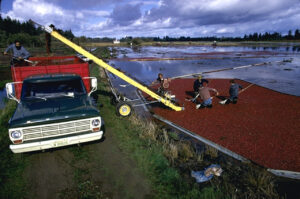
Cranberries loaded on truck for shipment. Photo by Earl J. Otis, USDAC
For producers, reducing food miles means selling products to a more local or regional market. While, this may be an intimidating prospect for farmers who have no experience with alternative markets, the opportunities are significant and diverse, including farmers’ markets, CSAs and farm-to-institution programs, all of which are looking for local producers. The following sections briefly examine some of the markets and methods available for a producer looking to reduce the energy involved in transporting food.
Direct Marketing
Direct marketing allows farmers to compete with wholesale market channels and mass supermarket systems, thereby creating a local food network and reducing the distance that food travels. Direct marketing networks could include farmers’ markets, wholesale food terminals and community-supported agriculture. The ATTRA publication Direct Marketing offers information about alternative marketing systems, with an emphasis on value-added crops.
Farmers Markets and CSAs
Selling produce at farmers’ markets is one alternative marketing strategy available for producers. By removing brokers from the distribution chain, farmers are able to reap a greater profit. Farmers’ markets also benefit community interaction and economic development. For more information about how to join or start a farmers’ market successfully, see the ATTRA publication Farmers Markets: Marketing and Business Guide .
Community supported agriculture (CSA) offers another option for marketing to a local or regional clientele. CSAs typically have members that are “share-holders” in the farm, paying for the anticipated costs of the farm operation. The ATTRA publication Community Supported Agriculture contains information about production considerations and using the Internet as a means of information dissemination to members.
The number of farmers’ markets and CSAs has grown substantially over the last decade indicating both the potential of success for the farmer and the growing demands of consumers for fresh, local food.
Farm-to-Institution Programs
Selling food directly to schools, hospitals, prisons and other institutions is becoming an increasingly popular option. Selling food to institutions creates a reliable market for the farmer and provides great health and economic benefits to the consumer. Farm-to-institution programs also reduce food miles. The University of Montana’s Farm to College program estimated that replacing a year’s supply of conventionally sourced hamburgers and French fries with local ingredients saved 43,000 gallons of fuel and the associated greenhouse gasses from being emitted.(16)
Ecolabels offer one method for educating consumers about locally grown, sustainably raised foods, and have proven effective in product marketing. An ecolabel is a seal or a logo indicating that a product has met a certain set of environmental and/or social standards or attributes.
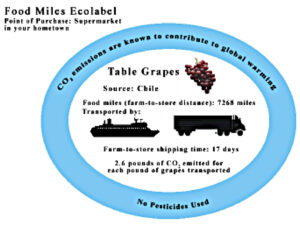
Food miles ecolabel example. Source: Leopold Center for Sustainable Agriculture
The Leopold Center for Sustainable Agriculture has researched the impact that labeling food with ecolabels containing information such as food miles and CO2 emissions has on consumers. The study aimed to determine consumer opinion of locally produced food and food miles. Surveys found that consumers were more responsive to labels that focused on the food product’s freshness and quality rather than environmental impact or CO2 emissions. Consumers perceive that locally grown food is fresher; therefore ecolabels that contain information such as “locally grown by family farmers” may be effective in influencing consumer food choices. The study also found that consumers are willing to pay more for food that has low environmental impacts.(17) Figure 7 is an example of a food label containing food miles information.
The Western Montana Sustainable Growers Union is a group of 12 Missoula-area organic farms that has developed the “Homegrown” label, which informs consumers that the food item they are purchasing was grown within 150 miles. Producers in the group pledge “to grow naturally, protect air and water, maintain fair labor practices and, most importantly, to sell and buy in their communities.” Groups such as this are jumping up across the country and having an impact on their markets.(18)
Consumer Considerations
Consumer demand.
Producers may question the extent to which consumers are using food miles as a basis for their food choices. In general food choices are no doubt based on price, taste and appearance and a large section of the public knows and cares little about climate change, especially with regard to food choices.(19)
There has been increasing demand for food produced in accordance with ethical and environmental standards, however, such as organic and fair trade. Food mile concerns may grow as well. Increasing food security and the domestic supply chain may be other arguments for reducing food miles.
Why Consumers Should Care About Food Miles
For consumers, convenience and cost are often driving factors when purchasing food. The choices consumers make, however, can have a great deal of influence on the direction our food system is headed. Reducing the energy intensiveness of our food has several economic, social and environmental benefits. Consumers who are reducing their food mile footprint:
- Enjoy fresher, healthier food
- Support local farmers
- Keep their money in the community
- Know where their food comes from
- Reduce their carbon footprint
Diet and Energy
Buying local and regional food is just one of many dietary choices with important environmental consequences. The FAO estimates that livestock are responsible for 18% of global greenhouse gas emissions.(20) A study at the University of Chicago compared the energy consumption associated with animal-based diets versus plant-based diets and found that consuming a typical American diet of both animals and plants results in 1,485 kg more CO2 than a diet based on plant sources only.
This study concludes that “For a person consuming a red meat diet at 35% of calories from animal sources, the added GHG burden above that of a plant eater equals the difference between driving a Camry and an SUV. These results clearly demonstrate the primary effect of one’s dietary choices on one’s planetary footprint, an effect comparable in magnitude to the car one chooses to drive.”(6)
Local vs. Organic
There has been a great amount of public interest over the last few years in organic food systems. This is an indication of consumers’ increasing awareness of where their food is coming from. Organic food is grown without synthetic fertilizers or pesticides. Since these chemicals are usually made from natural gas and other fossil fuels, through a highly energy-intensive process, eliminating synthetic fertilizer and pesticides can significantly reduce the amount of energy required for production. However, increased demand for organics has resulted in retailers sourcing organically grown food from around the globe, creating increased emissions in the transportation process. Some locally grown nonorganic foods may be less energy intensive than organic foods traveling long distances.
When evaluating our food options, the decisions are complex, especially if you want to make sustainable choices. Local, organic, fair-trade and other forms of sustainably produced food all play a role in creating sustainable food consumption patterns. The following table provides some guidelines for making ethical food decisions.
Table 1. What individuals can do to reduce food miles. Adapted from Brian Halweil’s Home Grown: the Case for Local Food in a Global Market. 2002. Learn what foods are in season in your area and try to build your diet around them. Shop at a local farmers market. People living in areas without a farmers’ market might try to start one themselves, linking up with interested neighbors and friends and contacting nearby farmers and agricultural officials for help. People can do the same with CSA subscription schemes. Eat minimally processed, packaged and marketed food. Generally speaking, the less processing and packaging you see, the less energy went into production and marketing, the less global warming pollution was created. Ask the manager or chef of your favorite restaurant how much of the food on the menu is locally grown, and then encourage him or her to source food locally. Urge that the share be increased. People can do the same at their local supermarket or school cafeteria. Consolidate trips when grocery shopping. Consider carpooling, public transportation, or a bike trailer for hauling groceries to reduce your personal contribution to food miles. Take a trip to a local farm to learn what it produces. Limit the amount of meat you consume and when you do buy meat, look for organic or free-range meat produced on sustainable farms. Produce a local food directory that lists all the local food sources in your area, including CSA arrangements, farmers’ markets, food co–ops, restaurants emphasizing seasonal cuisine and local produce, and farmers willing to sell direct to consumers year-round. Buy extra quantities of your favorite fruit or vegetable when it is in season and experiment with drying, canning, jamming, or otherwise preserving it for a later date. Plant a garden and grow as much of your own food as possible. Speak to your local politician about forming a local food policy council to help guide decisions that affect the local foodshed.
Food Miles Tools
Food Carbon Emissions Calculator This calculator allows users to calculate the carbon emissions related to your food choices, including transportation, waste, and quantity.
Food Carbon Footprint Calculator A tool for residents within the UK to calculate their food carbon footprint to better understand the extent to which food decisions impact global warming.
LCA Food Database A tool for acquiring an aggregated description of emissions, waste and the resource use from soil to kitchen per unit of different food items.
Iowa Produce Market Potential Calculator This calculator was designed to help users determine expanding markets in Iowa if consumers ate more locally grown fresh fruits and vegetables rather than produce from conventional sources outside the state.
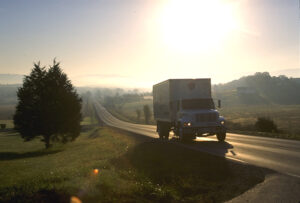
Truck on highway near Petersburg, West Virginia. Photo: Ken Hammond, USDA
Food miles are a growing cause of concern due to the greenhouse gas emissions released through the transportation of our food—and rightly so, as food miles consume a considerable amount of energy. However, we must consider the many complexities of the food system besides just the distance our food is traveling. Other important issues include the mode of transportation, the production method, and packaging considerations, as well as our own personal dietary choices. Each consumer food decision provides an opportunity to make a difference (large or small) in the way energy is used and greenhouse gases are emitted. At the same time, growing consumer interest in local and regional foods is creating new marketing opportunities and new possibilities for partnerships with agricultural producers.
Food Miles: Background and Marketing By Holly Hill NCAT Research Specialist IP312 Slot 311 © NCAT
This publication is produced by the National Center for Appropriate Technology through the ATTRA Sustainable Agriculture program, under a cooperative agreement with USDA Rural Development. This publication was also made possible in part by funding from the USDA Risk Management Agency. ATTRA.NCAT.ORG.
Originally Published 2008, IP312
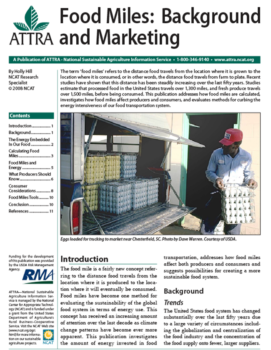
Related Publications
- Community Supported Agriculture
- Direct Marketing
- Farmers Markets: Marketing and Business Guide
Click here to add your own text
Freshly Picked
- Grant to Help Texas Department of Agriculture Promote Organic Producers
- ERS Report Explores Conservation Practice Adoption by Farmland Renters
- Report Recommends Improvements to EQIP to Serve More Farmers
- Study Links Wild Pollinator Numbers and Farm Productivity
- Conservation Innovation Grants in Virginia
NCAT Websites
NCAT.ORG ATTRA Sustainable Agriculture Armed to Farm AgriSolar Clearinghouse Soil for Water Latino Farmer Conference LIHEAP Clearinghouse Montana Harvest of the Month Grow Montana Mississippi Food Justice Collaborative
Don’t Miss!
About NCAT Donate Privacy Policy Social Media Community Policy Media Contact
National Center for Appropriate Technology
Helping people build resilient communities through local and sustainable solutions that reduce poverty, strengthen self-reliance, and protect natural resources.
We use cookies. We want to make our website more user-friendly and continuously improve it. If you continue to use the website, you agree to the use of cookies.
Cookie and Privacy Settings
We may request cookies to be set on your device. We use cookies to let us know when you visit our websites, how you interact with us, to enrich your user experience, and to customize your relationship with our website.
Click on the different category headings to find out more. You can also change some of your preferences. Note that blocking some types of cookies may impact your experience on our websites and the services we are able to offer.
These cookies are strictly necessary to provide you with services available through our website and to use some of its features.
Because these cookies are strictly necessary to deliver the website, refusing them will have impact how our site functions. You always can block or delete cookies by changing your browser settings and force blocking all cookies on this website. But this will always prompt you to accept/refuse cookies when revisiting our site.
We fully respect if you want to refuse cookies but to avoid asking you again and again kindly allow us to store a cookie for that. You are free to opt out any time or opt in for other cookies to get a better experience. If you refuse cookies we will remove all set cookies in our domain.
We provide you with a list of stored cookies on your computer in our domain so you can check what we stored. Due to security reasons we are not able to show or modify cookies from other domains. You can check these in your browser security settings.
These cookies collect information that is used either in aggregate form to help us understand how our website is being used or how effective our marketing campaigns are, or to help us customize our website and application for you in order to enhance your experience.
If you do not want that we track your visit to our site you can disable tracking in your browser here:
We also use different external services like Google Webfonts, Google Maps, and external Video providers. Since these providers may collect personal data like your IP address we allow you to block them here. Please be aware that this might heavily reduce the functionality and appearance of our site. Changes will take effect once you reload the page.
Google Webfont Settings:
Google Map Settings:
Google reCaptcha Settings:
Vimeo and Youtube video embeds:
The following cookies are also needed - You can choose if you want to allow them:
You can read about our cookies and privacy settings in detail on our Privacy Policy Page.

- < Previous
Home > FACSCH > FACPUB > 776
Scholarly Works
From “food miles” to “moneyball”: how we should be thinking about food and climate.
Bret C. Birdsong , University of Nevada, Las Vegas -- William S. Boyd School of Law
Document Type
Publication date.
Since Michael Pollan popularized the push to eat local food in his bestseller, The Omnivore’s Dilemma , the concept of “food miles” has been something of a rallying cry and an organizing principle in the marketing of the local food movement. Among locavores and their sympathizers, the term seems to encapsulate all that is wrong with the food system. Fresh grapes from Chile make their way to supermarkets from Maine to Minnesota, and even California. Major food conglomerates process commodity ingredients like corn, soy, and wheat into packaged food that travels across the country and across oceans before landing on a dinner plate. In a time when climate change is emerging as a widely accepted threat—perhaps the biggest threat—to the world as we know it, the concept of “food miles” alluringly invites us to take satisfying personal action where national and international governance have failed to forge an effective response to the warming planet. The term suggests that by acting locally, by eating locally, we can each do our own small, individual part to confront the enormity of this global problem—that shopping at the farmer’s market is a virtuous act of global citizenship.
This Essay seeks to demonstrate the limits of that notion and to suggest a different way of thinking about food and climate. Whether or not it is true that food travels an average of 1,500 miles before it reaches the American table, the concept of “food miles” is not one which we should construct policy around to address the food system’s contribution to global warming. This Essay seeks to bring to the discussion among American legal scholars and local food activists what is becoming increasingly clear to ecologists and other scientists who study the impact of the food system on climate: The distance between American fork and farm, while it may be a part of the climate change puzzle, is not a keystone. Fossil-fueled transportation accounts for a relatively small portion of the food system’s contribution to climate change. Far more important than transportation are the ways that farming is done, particularly the efficient uses of nitrogen fertilizer, the management of manure and livestock, and the clearing of forests for cultivation to provide food and energy (biofuel) to a growing world population.
This Essay will proceed in two main parts. In order to choose the most effective policies it is essential to understand what is known about the impact of the food sector on climate change. Part I places “food miles” in context by describing the ways in which agriculture (the cultivation of food) contributes to global warming. It does so not just by looking at today’s emissions from agriculture, but also by considering the climate impact of food production in future decades. Part II suggests a pragmatic policy approach to addressing climate change through the food and agriculture sector. It outlines a series of proposals, primarily to be undertaken on the international scale, that focuses on “low hanging fruit” by focusing on the sector’s most significant greenhouse gas emissions. It identifies five “Moneyball” strategies for smartly addressing the climate impacts of food production in the coming decades.
Publication Citation
65 Maine L. Rev. 409 (2013).
Recommended Citation
Birdsong, Bret C., "From “Food Miles” to “Moneyball”: How We Should Be Thinking About Food and Climate" (2013). Scholarly Works . 776. https://scholars.law.unlv.edu/facpub/776
Since August 14, 2013
Included in
Agriculture Law Commons , Food and Drug Law Commons
- Collections
Advanced Search
- Notify me via email or RSS
Author Corner
- Submit Research
UNLV Law Links
- Law Library
- Faculty Profiles
- Digital Scholarship@UNLV
Home | About | FAQ | My Account | Accessibility Statement
Privacy Copyright
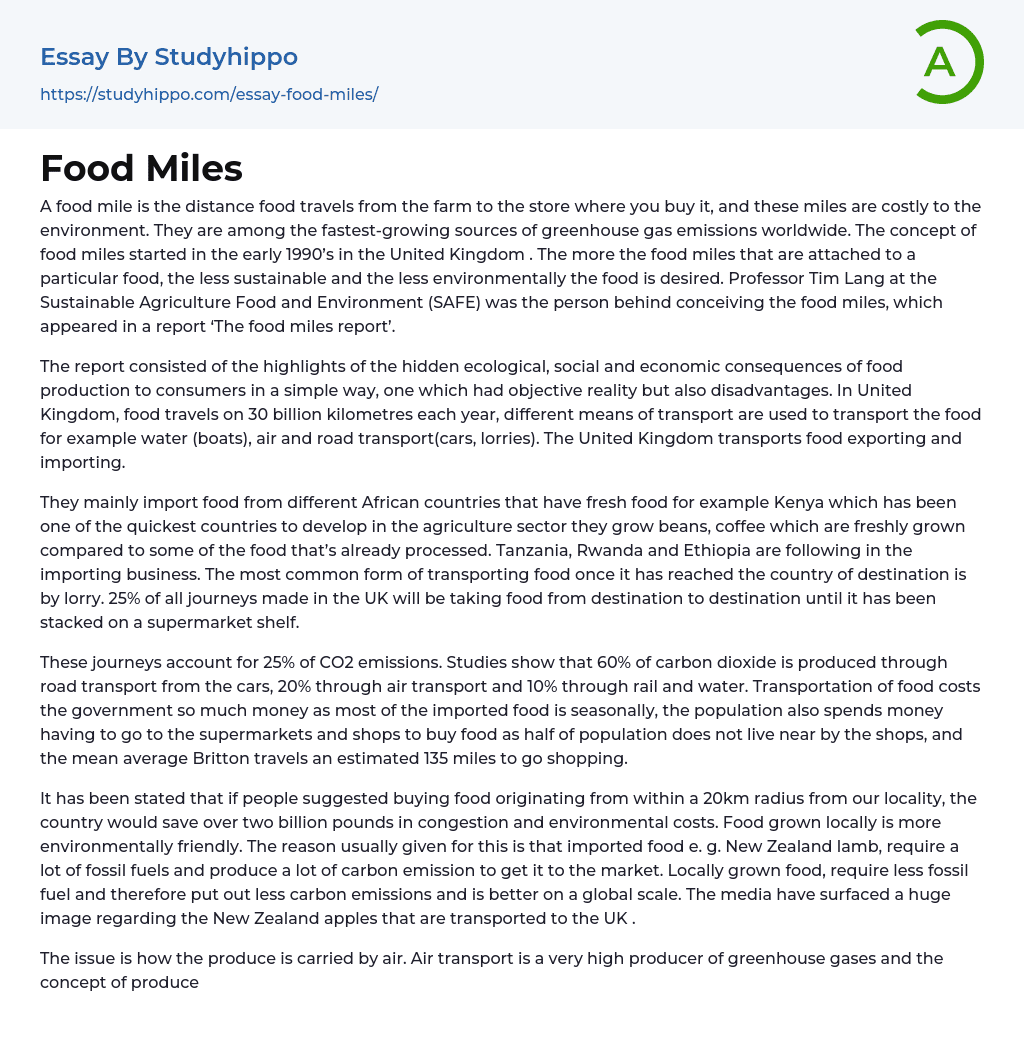
Food Miles Essay Example
- Pages: 3 (651 words)
- Published: January 4, 2017
- Type: Research Paper
A food mile is the distance food travels from the farm to the store where you buy it, and these miles are costly to the environment. They are among the fastest-growing sources of greenhouse gas emissions worldwide. The concept of food miles started in the early 1990’s in the United Kingdom . The more the food miles that are attached to a particular food, the less sustainable and the less environmentally the food is desired. Professor Tim Lang at the Sustainable Agriculture Food and Environment (SAFE) was the person behind conceiving the food miles, which appeared in a report ‘The food miles report’.
The report consisted of the highlights of the hidden ecological, social and economic consequences of food production to consumers in a simple way, one which had objective reality but also disadvantages. In
United Kingdom, food travels on 30 billion kilometres each year, different means of transport are used to transport the food for example water (boats), air and road transport(cars, lorries). The United Kingdom transports food exporting and importing.
They mainly import food from different African countries that have fresh food for example Kenya which has been one of the quickest countries to develop in the agriculture sector they grow beans, coffee which are freshly grown compared to some of the food that’s already processed. Tanzania, Rwanda and Ethiopia are following in the importing business. The most common form of transporting food once it has reached the country of destination is by lorry. 25% of all journeys made in the UK will be taking food from destination to destination until it has been stacked on a supermarket shelf.
style="text-align: justify">These journeys account for 25% of CO2 emissions. Studies show that 60% of carbon dioxide is produced through road transport from the cars, 20% through air transport and 10% through rail and water. Transportation of food costs the government so much money as most of the imported food is seasonally, the population also spends money having to go to the supermarkets and shops to buy food as half of population does not live near by the shops, and the mean average Britton travels an estimated 135 miles to go shopping.
It has been stated that if people suggested buying food originating from within a 20km radius from our locality, the country would save over two billion pounds in congestion and environmental costs. Food grown locally is more environmentally friendly. The reason usually given for this is that imported food e. g. New Zealand lamb, require a lot of fossil fuels and produce a lot of carbon emission to get it to the market. Locally grown food, require less fossil fuel and therefore put out less carbon emissions and is better on a global scale. The media have surfaced a huge image regarding the New Zealand apples that are transported to the UK .
The issue is how the produce is carried by air. Air transport is a very high producer of greenhouse gases and the concept of produce being flown from one side of the world to the other is repellent to many environmentally aware people. However, products like the New Zealand lamb going to the UK are not transported by air, but are freighted by ship, which uses less fossil fuel
and has less emission per kg of produce. The amount of fossil fuel used to import produce pales beside the amount of fossil fuel consumed taking the produce from the point of entry into the country to the depot, to the supermarket and then to the consumer’s home.
In conclusion food miles does not take into account the wider economic benefits that trade provides to consumers. For instance, it is difficult to pin point to whether how changes in preferences by Australian food consumers would affect regional development. A stronger consumer preference towards food products with lower food miles is also potentially harmful to Australian food exporters, as well as those in developing countries.
- Ailing Planet Essay Example
- Keeping Our Cities Clean Essay Example
- Agriculture - Modern agronomy Essay Example
- Von Thunen Model Essay Example
- Managing and Harvesting Wild Game Essay Example
- Together We Can Feed the World Essay Example
- Exploring Building Policies in Wales
- Social, Economic and Environmental Impacts in Tourism Essay Example
- Frito Lays Chip Dip Verse Vegetable Dip Essay Example
- Genetically Modified Foods - Friend or Foe Essay Example
- The Significance of Indigenous Materials Essay Example
- Portrayal of African Cultural Tradition in Chinua Achebe's Things Fall Apart
- Biology and Management of Key Insect Pests of Pulse Crops Essay Example
- Should We Go Beyond the Law. Ethics Essay Example
- An investigation of green marketing practices Essay Example
- Food Safety essays
- Food Security essays
- Beverages essays
- Cuisines essays
- Dairy essays
- Desserts essays
- Fast Food essays
- Bread essays
- Meal essays
- Meat essays
- Organic Food essays
- Rice essays
- Sugar essays
- Taste essays
- Beef essays
- Coconut essays
- Crowd essays
- Dinner essays
- Juice essays
- Sainsbury essays
- Cooking essays
- Ginger essays
- Oreo essays
- Drink essays
- Beer essays
- Wine essays
- Coffee essays
- Cake essays
- Hamburger essays
- Ice Cream essays
- Burger essays
- Pizza essays
- Fruit essays
- Lemon essays
- Food Waste essays
- Favorite Food essays
- Alcoholic essays
- Soft Drinks essays
- Cookie essays
- Starch essays
- Yeast essays
- Cola essays
- Pizza Hut essays
- snack foods essays
- chips essays
- Biscuit essays
- Brewing essays
- Brewery essays
- Anorexia essays
Haven't found what you were looking for?
Search for samples, answers to your questions and flashcards.
- Enter your topic/question
- Receive an explanation
- Ask one question at a time
- Enter a specific assignment topic
- Aim at least 500 characters
- a topic sentence that states the main or controlling idea
- supporting sentences to explain and develop the point you’re making
- evidence from your reading or an example from the subject area that supports your point
- analysis of the implication/significance/impact of the evidence finished off with a critical conclusion you have drawn from the evidence.
Unfortunately copying the content is not possible
Tell us your email address and we’ll send this sample there..
By continuing, you agree to our Terms and Conditions .
Welcome Guest!
- IELTS Listening
- IELTS Reading
- IELTS Writing
- IELTS Writing Task 1
- IELTS Writing Task 2
- IELTS Speaking
- IELTS Speaking Part 1
- IELTS Speaking Part 2
- IELTS Speaking Part 3
- IELTS Practice Tests
- IELTS Listening Practice Tests
- IELTS Reading Practice Tests
- IELTS Writing Practice Tests
- IELTS Speaking Practice Tests
- All Courses
- IELTS Online Classes
- OET Online Classes
- PTE Online Classes
- CELPIP Online Classes
- Free Live Classes
- Australia PR
- Germany Job Seeker Visa
- Austria Job Seeker Visa
- Sweden Job Seeker Visa
- Study Abroad
- Student Testimonials
- Our Trainers
- IELTS Webinar
- Immigration Webinar
IELTS Writing 2 Topic: Food
Updated On Oct 25, 2021

Share on Whatsapp
Share on Email
Share on Linkedin
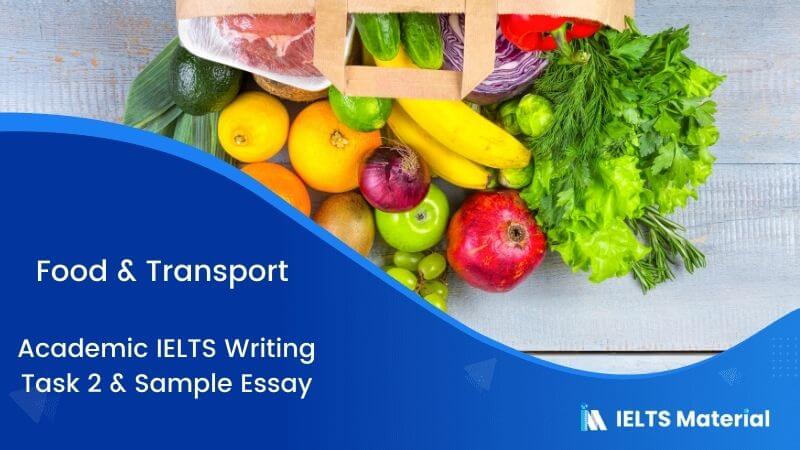
Limited-Time Offer : Access a FREE 10-Day IELTS Study Plan!
Today’s fresh food like vegetables or fruits travels thousands of miles from the rural areas or farms before it reaches customers in cities or urban areas. Why is this? Is this a positive or negative trend?
Get Evaluated for FREE:
Do you have an essay on this topic? Please post it in the comments section. One of our IELTS trainers will evaluate your essay from an examiner’s point of view and reply to the comment. This service is completely FREE of cost.
Direct Question Essay
Introduction
- Paraphrase the topic of the essay.
- Paragraph 1 – The spread of food to far-away places is cost-ineffective. Such fees related to gasoline, transportation delivery, staff management and other types of insurance are way beyond the pocket of suppliers. However, economically, it bestows upon both producers and consumers more noticeable benefits.
- Paragraph 2 – The second disadvantage of this trend is believed to trigger the inability to control the quality of food and growing dependence of each nation. The past has shown that Roman, as a consequence of relying on food chain supply of other nations, ever saw its power going into steep decline whereas the task of far-distance distribution can hardly ensure the thorough examination between suppliers and buyers, and trigger unwanted virus damaging the food.
- Conclude the essay by summarizing the topic and providing an inference.
Sample Essay
We all need food to survive. It is thought that with the domination of cutting-edge technology, such as airplane, food is accessible to everywhere while others see it as a danger, rather than a boon . I totally support the mobile trend in food distribution .
First of all, opponents of this tendency argue that the spread of food to far-away places is cost-ineffective . Such fees related to gasoline, transportation delivery, staff management and other types of insurance are way beyond the pocket of suppliers. However, economically, it bestows upon both producers and consumers more noticeable benefits. Due to scarcity of food in some areas, as a result of frozen or extremely scorching weather, crop failures are predictable, leading to a skyrocketing price . Hence, with the in-time delivery from other zones which are available in this type of needed food, the prices can be curbed and their taste is fully satisfied while businessmen who truly prioritize the demand of customers over others gain a huge amount of profit. Besides, as living standards of human escalates non-stop, their need for varied food, from eastern to western, is more urgent than ever, especially in times of globalization. As there goes a saying “ variety is the spice of life ”, food transported from thousands of miles away from its farm is inevitable.
The second disadvantage of this trend is believed to trigger the inability to control the quality of food and growing dependence of each nation. The past has shown that Roman, as a consequence of relying on food chain supply of other nations, ever saw its power going into steep decline whereas the task of far-distance distribution can hardly ensure the thorough examination between suppliers and buyers, and trigger unwanted virus damaging the food. Nevertheless, gone are the days that food was easily ruined by external factors when refrigerators and other types of modern innovations are employed to keep food fresh and pasteurize it effectively. Another point is that Roman might have seen a quick economic recovery if successfully developing other industries to compensate for their lack of food supply . Geographically, each nation is born to be in a location which could be either suitable or hostile to food production, but by focusing on their inherent strengths and exchanging their products, food supply and other types of products are readily accessible to both, and at the same time, this is conducive to heightening the specialization in their production and maximizing their output in general. Moreover, with this trend growing ever-prevalent , procedures of supervising food set up by food experts are internationalized. Entering the market of Wal-mart in America, customers are able to choose the lowest price dishes, while still feeling satisfied with their quality by dint of clear markings of out-of-date and usage attached to each item. Equally important, this tendency is a contributor to pressuring local food companies to continuously enhance their quality; otherwise, customers will turn to other markets for better ones with less cost.
All things considered , I strongly hold onto the view that more gains than pains are realized in this scenario for its cost-effective, motivational, win-win benefits for customers, producers and governments.
Domination (noun) control or power over other people or things
Cutting-edge (adj) extremely modern and advanced
Boon (noun) something useful that brings great benefits or makes your life easier
Bestow something on someone (verb) to give valuable property or an important right or honour to someone
Scorching (adj) extremely hot
Skyrocket (verb) rising quickly to a very high level
Variety is the spice of life (Cliché) You should try many different kinds of experiences, because trying different things keeps life interesting.
Band 9 Sample Essay
Unlock Essay
Signup/login to unlock band 9 essay and ace the IELTS
The system followed by grocery traders and merchants for procurement of fresh supplies is quite sophisticated in this day and age. Since the production of farm products is restricted to rural areas, transportation is the only avenue for obtaining fruits and vegetables for the urban market. Although there are various underlying reasons for this trend and there is a debate on whether such a system is feasible or not, this has been the conventional method followed by businesses across the globe. In the following paragraphs, I will explore and provide answers to the questions posed by the topic.
To begin with, we are all aware of the fact that agricultural activities are most prevalent in the countryside. Since rural areas are less polluted and the land is rich in nutrients, farming activities are abundant in such places. Thus, the primary supply of products like fruits and vegetables comes from rural areas. Moreover, due to the abundance of free land, the establishment of huge farms and plantations is easier in the country.
On the other hand, the demand for such farm products is greater in urban areas due to cities and towns being more densely populated. Consequently, traders have to bear enormous expenses on transportation so that these products are made available to the urban population in supermarkets and grocery stores. Although such expenses can be managed by large scale organizations with economies of scale, the same is not possible for small-time businesses. Furthermore, there are other costs like proper storage of these products as they are perishable in nature. All these limitations make this current approach costly and impractical for new and small-scale vendors.
In conclusion, I would like to say that even though the framework of procuring farm products through long-distance transportation is widely practised, it is not suitable for various reasons. As the integrity and the quality of such products become questionable when travelling huge distances from rural to urban areas, an improved process that is both efficient and cost-effective has to be implemented.
More Writing Task 2 Essay Topics
- I t Is Better For College Students To Live In Schools Than Live At Home With Their Parents
- Many Students Have To Study Subjects Which They Do Not Like
- Some People Argue That We Should Do Research Into Their Family History
- Some People Believe That Excessive Use Of Modern Technologies
- Parents Often Give Children Everything They Ask For And Do What They Like
Also check:
- IELTS Essay Topics
- Tips to write introduction in IELTS Writing Task 2
- Tips to write great writing essay
- IELTS Sample essays
- IELTS Writing task 2 Preparation Tips
- Tips to Improve IELTS Writing Skills
- How to get band 8 in IELTS Writing Task 2
- IELTS Writing recent actual test
- IELTS Direct question essay
- IELTS Band 9 essays
- Advantage and Disadvantage Essays
- IELTS Writing Answer sheet
- IELTS map vocabulary
- IELTS Writing Task 1 Connectors
Practice IELTS Writing Task 2 based on Essay types

Start Preparing for IELTS: Get Your 10-Day Study Plan Today!
Courtney Miller
Courtney is one of our star content writers as she plays multiple roles. She is a phenomenal researcher and provides extensive articles to students. She is also an IELTS Trainer and an extremely good content writer. Courtney completed her English Masters at Kings College London, and has been a part of our team for more than 3 years. She has worked with the British Council and knows the tricks and tips of IELTS.
Explore other Opinion Essays

Nehasri Ravishenbagam

Janice Thompson

Whitney Houston

Post your Comments
Posted on Nov 3, 2021
Band score : 5
Concentrate on the structure of the essay. This is a direct question essay which means you have to answer both parts of the question : one in each body paragraph. Also, in conclusion, you just restate points. You will not answer the second part of the question in conclusion.

Recent Articles

Kasturika Samanta

Raajdeep Saha
Our Offices
Gurgaon city scape, gurgaon bptp.
Step 1 of 3
Great going .
Get a free session from trainer
Have you taken test before?
Please select any option
Get free eBook to excel in test
Please enter Email ID
Get support from an Band 9 trainer
Please enter phone number
Already Registered?
Select a date
Please select a date
Select a time (IST Time Zone)
Please select a time
Mark Your Calendar: Free Session with Expert on
Which exam are you preparing?
Great Going!
- Social Justice
- Environment
- Health & Happiness
- Get YES! Emails
- Teacher Resources

- Give A Gift Subscription
- Teaching Sustainability
- Teaching Social Justice
- Teaching Respect & Empathy
- Student Writing Lessons
- Visual Learning Lessons
- Tough Topics Discussion Guides
- About the YES! for Teachers Program
- Student Writing Contest
Follow YES! For Teachers
Six brilliant student essays on the power of food to spark social change.
Read winning essays from our fall 2018 “Feeding Ourselves, Feeding Our Revolutions,” student writing contest.

For the Fall 2018 student writing competition, “Feeding Ourselves, Feeding Our Revolutions,” we invited students to read the YES! Magazine article, “Cooking Stirs the Pot for Social Change,” by Korsha Wilson and respond to this writing prompt: If you were to host a potluck or dinner to discuss a challenge facing your community or country, what food would you cook? Whom would you invite? On what issue would you deliberate?
The Winners
From the hundreds of essays written, these six—on anti-Semitism, cultural identity, death row prisoners, coming out as transgender, climate change, and addiction—were chosen as essay winners. Be sure to read the literary gems and catchy titles that caught our eye.
Middle School Winner: India Brown High School Winner: Grace Williams University Winner: Lillia Borodkin Powerful Voice Winner: Paisley Regester Powerful Voice Winner: Emma Lingo Powerful Voice Winner: Hayden Wilson
Literary Gems Clever Titles
Middle School Winner: India Brown
A Feast for the Future
Close your eyes and imagine the not too distant future: The Statue of Liberty is up to her knees in water, the streets of lower Manhattan resemble the canals of Venice, and hurricanes arrive in the fall and stay until summer. Now, open your eyes and see the beautiful planet that we will destroy if we do not do something. Now is the time for change. Our future is in our control if we take actions, ranging from small steps, such as not using plastic straws, to large ones, such as reducing fossil fuel consumption and electing leaders who take the problem seriously.
Hosting a dinner party is an extraordinary way to publicize what is at stake. At my potluck, I would serve linguini with clams. The clams would be sautéed in white wine sauce. The pasta tossed with a light coat of butter and topped with freshly shredded parmesan. I choose this meal because it cannot be made if global warming’s patterns persist. Soon enough, the ocean will be too warm to cultivate clams, vineyards will be too sweltering to grow grapes, and wheat fields will dry out, leaving us without pasta.
I think that giving my guests a delicious meal and then breaking the news to them that its ingredients would be unattainable if Earth continues to get hotter is a creative strategy to initiate action. Plus, on the off chance the conversation gets drastically tense, pasta is a relatively difficult food to throw.
In YES! Magazine’s article, “Cooking Stirs the Pot for Social Change,” Korsha Wilson says “…beyond the narrow definition of what cooking is, you can see that cooking is and has always been an act of resistance.” I hope that my dish inspires people to be aware of what’s at stake with increasing greenhouse gas emissions and work toward creating a clean energy future.
My guest list for the potluck would include two groups of people: local farmers, who are directly and personally affected by rising temperatures, increased carbon dioxide, drought, and flooding, and people who either do not believe in human-caused climate change or don’t think it affects anyone. I would invite the farmers or farm owners because their jobs and crops are dependent on the weather. I hope that after hearing a farmer’s perspective, climate-deniers would be awakened by the truth and more receptive to the effort to reverse these catastrophic trends.
Earth is a beautiful planet that provides everything we’ll ever need, but because of our pattern of living—wasteful consumption, fossil fuel burning, and greenhouse gas emissions— our habitat is rapidly deteriorating. Whether you are a farmer, a long-shower-taking teenager, a worker in a pollution-producing factory, or a climate-denier, the future of humankind is in our hands. The choices we make and the actions we take will forever affect planet Earth.
India Brown is an eighth grader who lives in New York City with her parents and older brother. She enjoys spending time with her friends, walking her dog, Morty, playing volleyball and lacrosse, and swimming.
High School Winner: Grace Williams

Apple Pie Embrace
It’s 1:47 a.m. Thanksgiving smells fill the kitchen. The sweet aroma of sugar-covered apples and buttery dough swirls into my nostrils. Fragrant orange and rosemary permeate the room and every corner smells like a stroll past the open door of a French bakery. My eleven-year-old eyes water, red with drowsiness, and refocus on the oven timer counting down. Behind me, my mom and aunt chat to no end, fueled by the seemingly self-replenishable coffee pot stashed in the corner. Their hands work fast, mashing potatoes, crumbling cornbread, and covering finished dishes in a thin layer of plastic wrap. The most my tired body can do is sit slouched on the backless wooden footstool. I bask in the heat escaping under the oven door.
As a child, I enjoyed Thanksgiving and the preparations that came with it, but it seemed like more of a bridge between my birthday and Christmas than an actual holiday. Now, it’s a time of year I look forward to, dedicated to family, memories, and, most importantly, food. What I realized as I grew older was that my homemade Thanksgiving apple pie was more than its flaky crust and soft-fruit center. This American food symbolized a rite of passage, my Iraqi family’s ticket to assimilation.
Some argue that by adopting American customs like the apple pie, we lose our culture. I would argue that while American culture influences what my family eats and celebrates, it doesn’t define our character. In my family, we eat Iraqi dishes like mesta and tahini, but we also eat Cinnamon Toast Crunch for breakfast. This doesn’t mean we favor one culture over the other; instead, we create a beautiful blend of the two, adapting traditions to make them our own.
That said, my family has always been more than the “mashed potatoes and turkey” type.
My mom’s family immigrated to the United States in 1976. Upon their arrival, they encountered a deeply divided America. Racism thrived, even after the significant freedoms gained from the Civil Rights Movement a few years before. Here, my family was thrust into a completely unknown world: they didn’t speak the language, they didn’t dress normally, and dinners like riza maraka seemed strange in comparison to the Pop Tarts and Oreos lining grocery store shelves.
If I were to host a dinner party, it would be like Thanksgiving with my Chaldean family. The guests, my extended family, are a diverse people, distinct ingredients in a sweet potato casserole, coming together to create a delicious dish.
In her article “Cooking Stirs the Pot for Social Change,” Korsha Wilson writes, “each ingredient that we use, every technique, every spice tells a story about our access, our privilege, our heritage, and our culture.” Voices around the room will echo off the walls into the late hours of the night while the hot apple pie steams at the table’s center.
We will play concan on the blanketed floor and I’ll try to understand my Toto, who, after forty years, still speaks broken English. I’ll listen to my elders as they tell stories about growing up in Unionville, Michigan, a predominately white town where they always felt like outsiders, stories of racism that I have the privilege not to experience. While snacking on sunflower seeds and salted pistachios, we’ll talk about the news- how thousands of people across the country are protesting for justice among immigrants. No one protested to give my family a voice.
Our Thanksgiving food is more than just sustenance, it is a physical representation of my family ’s blended and ever-changing culture, even after 40 years in the United States. No matter how the food on our plates changes, it will always symbolize our sense of family—immediate and extended—and our unbreakable bond.
Grace Williams, a student at Kirkwood High School in Kirkwood, Missouri, enjoys playing tennis, baking, and spending time with her family. Grace also enjoys her time as a writing editor for her school’s yearbook, the Pioneer. In the future, Grace hopes to continue her travels abroad, as well as live near extended family along the sunny beaches of La Jolla, California.
University Winner: Lillia Borodkin

Nourishing Change After Tragedy Strikes
In the Jewish community, food is paramount. We often spend our holidays gathered around a table, sharing a meal and reveling in our people’s story. On other sacred days, we fast, focusing instead on reflection, atonement, and forgiveness.
As a child, I delighted in the comfort of matzo ball soup, the sweetness of hamantaschen, and the beauty of braided challah. But as I grew older and more knowledgeable about my faith, I learned that the origins of these foods are not rooted in joy, but in sacrifice.
The matzo of matzo balls was a necessity as the Jewish people did not have time for their bread to rise as they fled slavery in Egypt. The hamantaschen was an homage to the hat of Haman, the villain of the Purim story who plotted the Jewish people’s destruction. The unbaked portion of braided challah was tithed by commandment to the kohen or priests. Our food is an expression of our history, commemorating both our struggles and our triumphs.
As I write this, only days have passed since eleven Jews were killed at the Tree of Life Synagogue in Pittsburgh. These people, intending only to pray and celebrate the Sabbath with their community, were murdered simply for being Jewish. This brutal event, in a temple and city much like my own, is a reminder that anti-Semitism still exists in this country. A reminder that hatred of Jews, of me, my family, and my community, is alive and flourishing in America today. The thought that a difference in religion would make some believe that others do not have the right to exist is frightening and sickening.
This is why, if given the chance, I would sit down the entire Jewish American community at one giant Shabbat table. I’d serve matzo ball soup, pass around loaves of challah, and do my best to offer comfort. We would take time to remember the beautiful souls lost to anti-Semitism this October and the countless others who have been victims of such hatred in the past. I would then ask that we channel all we are feeling—all the fear, confusion, and anger —into the fight.
As suggested in Korsha Wilson’s “Cooking Stirs the Pot for Social Change,” I would urge my guests to direct our passion for justice and the comfort and care provided by the food we are eating into resisting anti-Semitism and hatred of all kinds.
We must use the courage this sustenance provides to create change and honor our people’s suffering and strength. We must remind our neighbors, both Jewish and non-Jewish, that anti-Semitism is alive and well today. We must shout and scream and vote until our elected leaders take this threat to our community seriously. And, we must stand with, support, and listen to other communities that are subjected to vengeful hate today in the same way that many of these groups have supported us in the wake of this tragedy.
This terrible shooting is not the first of its kind, and if conflict and loathing are permitted to grow, I fear it will not be the last. While political change may help, the best way to target this hate is through smaller-scale actions in our own communities.
It is critical that we as a Jewish people take time to congregate and heal together, but it is equally necessary to include those outside the Jewish community to build a powerful crusade against hatred and bigotry. While convening with these individuals, we will work to end the dangerous “otherizing” that plagues our society and seek to understand that we share far more in common than we thought. As disagreements arise during our discussions, we will learn to respect and treat each other with the fairness we each desire. Together, we shall share the comfort, strength, and courage that traditional Jewish foods provide and use them to fuel our revolution.
We are not alone in the fight despite what extremists and anti-semites might like us to believe. So, like any Jew would do, I invite you to join me at the Shabbat table. First, we will eat. Then, we will get to work.
Lillia Borodkin is a senior at Kent State University majoring in Psychology with a concentration in Child Psychology. She plans to attend graduate school and become a school psychologist while continuing to pursue her passion for reading and writing. Outside of class, Lillia is involved in research in the psychology department and volunteers at the Women’s Center on campus.
Powerful Voice Winner: Paisley Regester
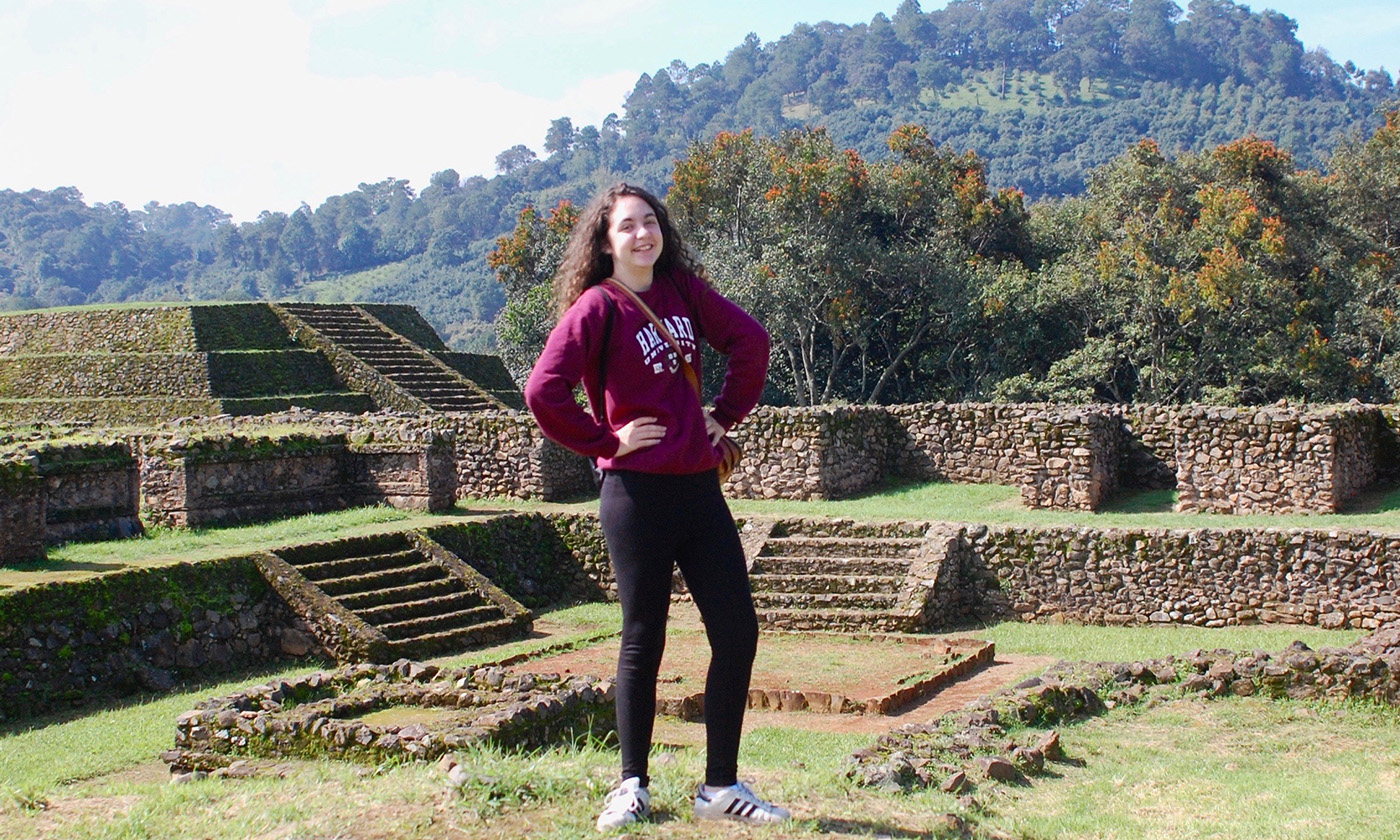
As a kid, I remember asking my friends jokingly, ”If you were stuck on a deserted island, what single item of food would you bring?” Some of my friends answered practically and said they’d bring water. Others answered comically and said they’d bring snacks like Flamin’ Hot Cheetos or a banana. However, most of my friends answered sentimentally and listed the foods that made them happy. This seems like fun and games, but what happens if the hypothetical changes? Imagine being asked, on the eve of your death, to choose the final meal you will ever eat. What food would you pick? Something practical? Comical? Sentimental?
This situation is the reality for the 2,747 American prisoners who are currently awaiting execution on death row. The grim ritual of “last meals,” when prisoners choose their final meal before execution, can reveal a lot about these individuals and what they valued throughout their lives.
It is difficult for us to imagine someone eating steak, lobster tail, apple pie, and vanilla ice cream one moment and being killed by state-approved lethal injection the next. The prisoner can only hope that the apple pie he requested tastes as good as his mom’s. Surprisingly, many people in prison decline the option to request a special last meal. We often think of food as something that keeps us alive, so is there really any point to eating if someone knows they are going to die?
“Controlling food is a means of controlling power,” said chef Sean Sherman in the YES! Magazine article “Cooking Stirs the Pot for Social Change,” by Korsha Wilson. There are deeper stories that lie behind the final meals of individuals on death row.
I want to bring awareness to the complex and often controversial conditions of this country’s criminal justice system and change the common perception of prisoners as inhuman. To accomplish this, I would host a potluck where I would recreate the last meals of prisoners sentenced to death.
In front of each plate, there would be a place card with the prisoner’s full name, the date of execution, and the method of execution. These meals could range from a plate of fried chicken, peas with butter, apple pie, and a Dr. Pepper, reminiscent of a Sunday dinner at Grandma’s, to a single olive.
Seeing these meals up close, meals that many may eat at their own table or feed to their own kids, would force attendees to face the reality of the death penalty. It will urge my guests to look at these individuals not just as prisoners, assigned a number and a death date, but as people, capable of love and rehabilitation.
This potluck is not only about realizing a prisoner’s humanity, but it is also about recognizing a flawed criminal justice system. Over the years, I have become skeptical of the American judicial system, especially when only seven states have judges who ethnically represent the people they serve. I was shocked when I found out that the officers who killed Michael Brown and Anthony Lamar Smith were exonerated for their actions. How could that be possible when so many teens and adults of color have spent years in prison, some even executed, for crimes they never committed?
Lawmakers, police officers, city officials, and young constituents, along with former prisoners and their families, would be invited to my potluck to start an honest conversation about the role and application of inequality, dehumanization, and racism in the death penalty. Food served at the potluck would represent the humanity of prisoners and push people to acknowledge that many inmates are victims of a racist and corrupt judicial system.
Recognizing these injustices is only the first step towards a more equitable society. The second step would be acting on these injustices to ensure that every voice is heard, even ones separated from us by prison walls. Let’s leave that for the next potluck, where I plan to serve humble pie.
Paisley Regester is a high school senior and devotes her life to activism, the arts, and adventure. Inspired by her experiences traveling abroad to Nicaragua, Mexico, and Scotland, Paisley hopes to someday write about the diverse people and places she has encountered and share her stories with the rest of the world.
Powerful Voice Winner: Emma Lingo

The Empty Seat
“If you aren’t sober, then I don’t want to see you on Christmas.”
Harsh words for my father to hear from his daughter but words he needed to hear. Words I needed him to understand and words he seemed to consider as he fiddled with his wine glass at the head of the table. Our guests, my grandma, and her neighbors remained resolutely silent. They were not about to defend my drunken father–or Charles as I call him–from my anger or my ultimatum.
This was the first dinner we had had together in a year. The last meal we shared ended with Charles slopping his drink all over my birthday presents and my mother explaining heroin addiction to me. So, I wasn’t surprised when Charles threw down some liquid valor before dinner in anticipation of my anger. If he wanted to be welcomed on Christmas, he needed to be sober—or he needed to be gone.
Countless dinners, holidays, and birthdays taught me that my demands for sobriety would fall on deaf ears. But not this time. Charles gave me a gift—a one of a kind, limited edition, absolutely awkward treat. One that I didn’t know how to deal with at all. Charles went home that night, smacked a bright red bow on my father, and hand-delivered him to me on Christmas morning.
He arrived for breakfast freshly showered and looking flustered. He would remember this day for once only because his daughter had scolded him into sobriety. Dad teetered between happiness and shame. Grandma distracted us from Dad’s presence by bringing the piping hot bacon and biscuits from the kitchen to the table, theatrically announcing their arrival. Although these foods were the alleged focus of the meal, the real spotlight shined on the unopened liquor cabinet in my grandma’s kitchen—the cabinet I know Charles was begging Dad to open.
I’ve isolated myself from Charles. My family has too. It means we don’t see Dad, but it’s the best way to avoid confrontation and heartache. Sometimes I find myself wondering what it would be like if we talked with him more or if he still lived nearby. Would he be less inclined to use? If all families with an addict tried to hang on to a relationship with the user, would there be fewer addicts in the world? Christmas breakfast with Dad was followed by Charles whisking him away to Colorado where pot had just been legalized. I haven’t talked to Dad since that Christmas.
As Korsha Wilson stated in her YES! Magazine article, “Cooking Stirs the Pot for Social Change,” “Sometimes what we don’t cook says more than what we do cook.” When it comes to addiction, what isn’t served is more important than what is. In quiet moments, I like to imagine a meal with my family–including Dad. He’d have a spot at the table in my little fantasy. No alcohol would push him out of his chair, the cigarettes would remain seated in his back pocket, and the stench of weed wouldn’t invade the dining room. Fruit salad and gumbo would fill the table—foods that Dad likes. We’d talk about trivial matters in life, like how school is going and what we watched last night on TV.
Dad would feel loved. We would connect. He would feel less alone. At the end of the night, he’d walk me to the door and promise to see me again soon. And I would believe him.
Emma Lingo spends her time working as an editor for her school paper, reading, and being vocal about social justice issues. Emma is active with many clubs such as Youth and Government, KHS Cares, and Peer Helpers. She hopes to be a journalist one day and to be able to continue helping out people by volunteering at local nonprofits.
Powerful Voice Winner: Hayden Wilson

Bittersweet Reunion
I close my eyes and envision a dinner of my wildest dreams. I would invite all of my relatives. Not just my sister who doesn’t ask how I am anymore. Not just my nephews who I’m told are too young to understand me. No, I would gather all of my aunts, uncles, and cousins to introduce them to the me they haven’t met.
For almost two years, I’ve gone by a different name that most of my family refuses to acknowledge. My aunt, a nun of 40 years, told me at a recent birthday dinner that she’d heard of my “nickname.” I didn’t want to start a fight, so I decided not to correct her. Even the ones who’ve adjusted to my name have yet to recognize the bigger issue.
Last year on Facebook, I announced to my friends and family that I am transgender. No one in my family has talked to me about it, but they have plenty to say to my parents. I feel as if this is about my parents more than me—that they’ve made some big parenting mistake. Maybe if I invited everyone to dinner and opened up a discussion, they would voice their concerns to me instead of my parents.
I would serve two different meals of comfort food to remind my family of our good times. For my dad’s family, I would cook heavily salted breakfast food, the kind my grandpa used to enjoy. He took all of his kids to IHOP every Sunday and ordered the least healthy option he could find, usually some combination of an overcooked omelet and a loaded Classic Burger. For my mom’s family, I would buy shakes and burgers from Hardee’s. In my grandma’s final weeks, she let aluminum tins of sympathy meals pile up on her dining table while she made my uncle take her to Hardee’s every day.
In her article on cooking and activism, food writer Korsha Wilson writes, “Everyone puts down their guard over a good meal, and in that space, change is possible.” Hopefully the same will apply to my guests.
When I first thought of this idea, my mind rushed to the endless negative possibilities. My nun-aunt and my two non-nun aunts who live like nuns would whip out their Bibles before I even finished my first sentence. My very liberal, state representative cousin would say how proud she is of the guy I’m becoming, but this would trigger my aunts to accuse her of corrupting my mind. My sister, who has never spoken to me about my genderidentity, would cover her children’s ears and rush them out of the house. My Great-Depression-raised grandparents would roll over in their graves, mumbling about how kids have it easy nowadays.
After mentally mapping out every imaginable terrible outcome this dinner could have, I realized a conversation is unavoidable if I want my family to accept who I am. I long to restore the deep connection I used to have with them. Though I often think these former relationships are out of reach, I won’t know until I try to repair them. For a year and a half, I’ve relied on Facebook and my parents to relay messages about my identity, but I need to tell my own story.
At first, I thought Korsha Wilson’s idea of a cooked meal leading the way to social change was too optimistic, but now I understand that I need to think more like her. Maybe, just maybe, my family could all gather around a table, enjoy some overpriced shakes, and be as close as we were when I was a little girl.
Hayden Wilson is a 17-year-old high school junior from Missouri. He loves writing, making music, and painting. He’s a part of his school’s writing club, as well as the GSA and a few service clubs.
Literary Gems
We received many outstanding essays for the Fall 2018 Writing Competition. Though not every participant can win the contest, we’d like to share some excerpts that caught our eye.
Thinking of the main staple of the dish—potatoes, the starchy vegetable that provides sustenance for people around the globe. The onion, the layers of sorrow and joy—a base for this dish served during the holidays. The oil, symbolic of hope and perseverance. All of these elements come together to form this delicious oval pancake permeating with possibilities. I wonder about future possibilities as I flip the latkes.
—Nikki Markman, University of San Francisco, San Francisco, California
The egg is a treasure. It is a fragile heart of gold that once broken, flows over the blemishless surface of the egg white in dandelion colored streams, like ribbon unraveling from its spool.
—Kaylin Ku, West Windsor-Plainsboro High School South, Princeton Junction, New Jersey
If I were to bring one food to a potluck to create social change by addressing anti-Semitism, I would bring gefilte fish because it is different from other fish, just like the Jews are different from other people. It looks more like a matzo ball than fish, smells extraordinarily fishy, and tastes like sweet brine with the consistency of a crab cake.
—Noah Glassman, Ethical Culture Fieldston School, Bronx, New York
I would not only be serving them something to digest, I would serve them a one-of-a-kind taste of the past, a taste of fear that is felt in the souls of those whose home and land were taken away, a taste of ancestral power that still lives upon us, and a taste of the voices that want to be heard and that want the suffering of the Natives to end.
—Citlalic Anima Guevara, Wichita North High School, Wichita, Kansas
It’s the one thing that your parents make sure you have because they didn’t. Food is what your mother gives you as she lies, telling you she already ate. It’s something not everybody is fortunate to have and it’s also what we throw away without hesitation. Food is a blessing to me, but what is it to you?
—Mohamed Omar, Kirkwood High School, Kirkwood, Missouri
Filleted and fried humphead wrasse, mangrove crab with coconut milk, pounded taro, a whole roast pig, and caramelized nuts—cuisines that will not be simplified to just “food.” Because what we eat is the diligence and pride of our people—a culture that has survived and continues to thrive.
—Mayumi Remengesau, University of San Francisco, San Francisco, California
Some people automatically think I’m kosher or ask me to say prayers in Hebrew. However, guess what? I don’t know many prayers and I eat bacon.
—Hannah Reing, Ethical Culture Fieldston School, The Bronx, New York
Everything was placed before me. Rolling up my sleeves I started cracking eggs, mixing flour, and sampling some chocolate chips, because you can never be too sure. Three separate bowls. All different sizes. Carefully, I tipped the smallest, and the medium-sized bowls into the biggest. Next, I plugged in my hand-held mixer and flicked on the switch. The beaters whirl to life. I lowered it into the bowl and witnessed the creation of something magnificent. Cookie dough.
—Cassandra Amaya, Owen Goodnight Middle School, San Marcos, Texas
Biscuits and bisexuality are both things that are in my life…My grandmother’s biscuits are the best: the good old classic Southern biscuits, crunchy on the outside, fluffy on the inside. Except it is mostly Southern people who don’t accept me.
—Jaden Huckaby, Arbor Montessori, Decatur, Georgia
We zest the bright yellow lemons and the peels of flavor fall lightly into the batter. To make frosting, we keep adding more and more powdered sugar until it looks like fluffy clouds with raspberry seed rain.
—Jane Minus, Ethical Culture Fieldston School, Bronx, New York
Tamales for my grandma, I can still remember her skillfully spreading the perfect layer of masa on every corn husk, looking at me pitifully as my young hands fumbled with the corn wrapper, always too thick or too thin.
—Brenna Eliaz, San Marcos High School, San Marcos, Texas
Just like fry bread, MRE’s (Meals Ready to Eat) remind New Orleanians and others affected by disasters of the devastation throughout our city and the little amount of help we got afterward.
—Madeline Johnson, Spring Hill College, Mobile, Alabama
I would bring cream corn and buckeyes and have a big debate on whether marijuana should be illegal or not.
—Lillian Martinez, Miller Middle School, San Marcos, Texas
We would finish the meal off with a delicious apple strudel, topped with schlag, schlag, schlag, more schlag, and a cherry, and finally…more schlag (in case you were wondering, schlag is like whipped cream, but 10 times better because it is heavier and sweeter).
—Morgan Sheehan, Ethical Culture Fieldston School, Bronx, New York
Clever Titles
This year we decided to do something different. We were so impressed by the number of catchy titles that we decided to feature some of our favorites.
“Eat Like a Baby: Why Shame Has No Place at a Baby’s Dinner Plate”
—Tate Miller, Wichita North High School, Wichita, Kansas
“The Cheese in Between”
—Jedd Horowitz, Ethical Culture Fieldston School, Bronx, New York
“Harvey, Michael, Florence or Katrina? Invite Them All Because Now We Are Prepared”
—Molly Mendoza, Spring Hill College, Mobile, Alabama
“Neglecting Our Children: From Broccoli to Bullets”
—Kylie Rollings, Kirkwood High School, Kirkwood, Missouri
“The Lasagna of Life”
—Max Williams, Wichita North High School, Wichita, Kansas
“Yum, Yum, Carbon Dioxide In Our Lungs”
—Melanie Eickmeyer, Kirkwood High School, Kirkwood, Missouri
“My Potluck, My Choice”
—Francesca Grossberg, Ethical Culture Fieldston School, Bronx, New York
“Trumping with Tacos”
—Maya Goncalves, Lincoln Middle School, Ypsilanti, Michigan
“Quiche and Climate Change”
—Bernie Waldman, Ethical Culture Fieldston School, Bronx, New York
“Biscuits and Bisexuality”
“W(health)”
—Miles Oshan, San Marcos High School, San Marcos, Texas
“Bubula, Come Eat!”
—Jordan Fienberg, Ethical Culture Fieldston School, Bronx, New York
Get Stories of Solutions to Share with Your Classroom
Teachers save 50% on YES! Magazine.
Inspiration in Your Inbox
Get the free daily newsletter from YES! Magazine: Stories of people creating a better world to inspire you and your students.

Turn Your Curiosity Into Discovery
Latest facts.

The Best AI Photo Editor of 2024 A Comprehensive Review

6 Facts You Didnt Know About Ecommerce Call Center Outsourcing
40 facts about elektrostal.
Written by Lanette Mayes
Modified & Updated: 02 Mar 2024
Reviewed by Jessica Corbett

Elektrostal is a vibrant city located in the Moscow Oblast region of Russia. With a rich history, stunning architecture, and a thriving community, Elektrostal is a city that has much to offer. Whether you are a history buff, nature enthusiast, or simply curious about different cultures, Elektrostal is sure to captivate you.
This article will provide you with 40 fascinating facts about Elektrostal, giving you a better understanding of why this city is worth exploring. From its origins as an industrial hub to its modern-day charm, we will delve into the various aspects that make Elektrostal a unique and must-visit destination.
So, join us as we uncover the hidden treasures of Elektrostal and discover what makes this city a true gem in the heart of Russia.
Key Takeaways:
- Elektrostal, known as the “Motor City of Russia,” is a vibrant and growing city with a rich industrial history, offering diverse cultural experiences and a strong commitment to environmental sustainability.
- With its convenient location near Moscow, Elektrostal provides a picturesque landscape, vibrant nightlife, and a range of recreational activities, making it an ideal destination for residents and visitors alike.
Known as the “Motor City of Russia.”
Elektrostal, a city located in the Moscow Oblast region of Russia, earned the nickname “Motor City” due to its significant involvement in the automotive industry.
Home to the Elektrostal Metallurgical Plant.
Elektrostal is renowned for its metallurgical plant, which has been producing high-quality steel and alloys since its establishment in 1916.
Boasts a rich industrial heritage.
Elektrostal has a long history of industrial development, contributing to the growth and progress of the region.
Founded in 1916.
The city of Elektrostal was founded in 1916 as a result of the construction of the Elektrostal Metallurgical Plant.
Located approximately 50 kilometers east of Moscow.
Elektrostal is situated in close proximity to the Russian capital, making it easily accessible for both residents and visitors.
Known for its vibrant cultural scene.
Elektrostal is home to several cultural institutions, including museums, theaters, and art galleries that showcase the city’s rich artistic heritage.
A popular destination for nature lovers.
Surrounded by picturesque landscapes and forests, Elektrostal offers ample opportunities for outdoor activities such as hiking, camping, and birdwatching.
Hosts the annual Elektrostal City Day celebrations.
Every year, Elektrostal organizes festive events and activities to celebrate its founding, bringing together residents and visitors in a spirit of unity and joy.
Has a population of approximately 160,000 people.
Elektrostal is home to a diverse and vibrant community of around 160,000 residents, contributing to its dynamic atmosphere.
Boasts excellent education facilities.
The city is known for its well-established educational institutions, providing quality education to students of all ages.
A center for scientific research and innovation.
Elektrostal serves as an important hub for scientific research, particularly in the fields of metallurgy, materials science, and engineering.
Surrounded by picturesque lakes.
The city is blessed with numerous beautiful lakes, offering scenic views and recreational opportunities for locals and visitors alike.
Well-connected transportation system.
Elektrostal benefits from an efficient transportation network, including highways, railways, and public transportation options, ensuring convenient travel within and beyond the city.
Famous for its traditional Russian cuisine.
Food enthusiasts can indulge in authentic Russian dishes at numerous restaurants and cafes scattered throughout Elektrostal.
Home to notable architectural landmarks.
Elektrostal boasts impressive architecture, including the Church of the Transfiguration of the Lord and the Elektrostal Palace of Culture.
Offers a wide range of recreational facilities.
Residents and visitors can enjoy various recreational activities, such as sports complexes, swimming pools, and fitness centers, enhancing the overall quality of life.
Provides a high standard of healthcare.
Elektrostal is equipped with modern medical facilities, ensuring residents have access to quality healthcare services.
Home to the Elektrostal History Museum.
The Elektrostal History Museum showcases the city’s fascinating past through exhibitions and displays.
A hub for sports enthusiasts.
Elektrostal is passionate about sports, with numerous stadiums, arenas, and sports clubs offering opportunities for athletes and spectators.
Celebrates diverse cultural festivals.
Throughout the year, Elektrostal hosts a variety of cultural festivals, celebrating different ethnicities, traditions, and art forms.
Electric power played a significant role in its early development.
Elektrostal owes its name and initial growth to the establishment of electric power stations and the utilization of electricity in the industrial sector.
Boasts a thriving economy.
The city’s strong industrial base, coupled with its strategic location near Moscow, has contributed to Elektrostal’s prosperous economic status.
Houses the Elektrostal Drama Theater.
The Elektrostal Drama Theater is a cultural centerpiece, attracting theater enthusiasts from far and wide.
Popular destination for winter sports.
Elektrostal’s proximity to ski resorts and winter sport facilities makes it a favorite destination for skiing, snowboarding, and other winter activities.
Promotes environmental sustainability.
Elektrostal prioritizes environmental protection and sustainability, implementing initiatives to reduce pollution and preserve natural resources.
Home to renowned educational institutions.
Elektrostal is known for its prestigious schools and universities, offering a wide range of academic programs to students.
Committed to cultural preservation.
The city values its cultural heritage and takes active steps to preserve and promote traditional customs, crafts, and arts.
Hosts an annual International Film Festival.
The Elektrostal International Film Festival attracts filmmakers and cinema enthusiasts from around the world, showcasing a diverse range of films.
Encourages entrepreneurship and innovation.
Elektrostal supports aspiring entrepreneurs and fosters a culture of innovation, providing opportunities for startups and business development.
Offers a range of housing options.
Elektrostal provides diverse housing options, including apartments, houses, and residential complexes, catering to different lifestyles and budgets.
Home to notable sports teams.
Elektrostal is proud of its sports legacy, with several successful sports teams competing at regional and national levels.
Boasts a vibrant nightlife scene.
Residents and visitors can enjoy a lively nightlife in Elektrostal, with numerous bars, clubs, and entertainment venues.
Promotes cultural exchange and international relations.
Elektrostal actively engages in international partnerships, cultural exchanges, and diplomatic collaborations to foster global connections.
Surrounded by beautiful nature reserves.
Nearby nature reserves, such as the Barybino Forest and Luchinskoye Lake, offer opportunities for nature enthusiasts to explore and appreciate the region’s biodiversity.
Commemorates historical events.
The city pays tribute to significant historical events through memorials, monuments, and exhibitions, ensuring the preservation of collective memory.
Promotes sports and youth development.
Elektrostal invests in sports infrastructure and programs to encourage youth participation, health, and physical fitness.
Hosts annual cultural and artistic festivals.
Throughout the year, Elektrostal celebrates its cultural diversity through festivals dedicated to music, dance, art, and theater.
Provides a picturesque landscape for photography enthusiasts.
The city’s scenic beauty, architectural landmarks, and natural surroundings make it a paradise for photographers.
Connects to Moscow via a direct train line.
The convenient train connection between Elektrostal and Moscow makes commuting between the two cities effortless.
A city with a bright future.
Elektrostal continues to grow and develop, aiming to become a model city in terms of infrastructure, sustainability, and quality of life for its residents.
In conclusion, Elektrostal is a fascinating city with a rich history and a vibrant present. From its origins as a center of steel production to its modern-day status as a hub for education and industry, Elektrostal has plenty to offer both residents and visitors. With its beautiful parks, cultural attractions, and proximity to Moscow, there is no shortage of things to see and do in this dynamic city. Whether you’re interested in exploring its historical landmarks, enjoying outdoor activities, or immersing yourself in the local culture, Elektrostal has something for everyone. So, next time you find yourself in the Moscow region, don’t miss the opportunity to discover the hidden gems of Elektrostal.
Q: What is the population of Elektrostal?
A: As of the latest data, the population of Elektrostal is approximately XXXX.
Q: How far is Elektrostal from Moscow?
A: Elektrostal is located approximately XX kilometers away from Moscow.
Q: Are there any famous landmarks in Elektrostal?
A: Yes, Elektrostal is home to several notable landmarks, including XXXX and XXXX.
Q: What industries are prominent in Elektrostal?
A: Elektrostal is known for its steel production industry and is also a center for engineering and manufacturing.
Q: Are there any universities or educational institutions in Elektrostal?
A: Yes, Elektrostal is home to XXXX University and several other educational institutions.
Q: What are some popular outdoor activities in Elektrostal?
A: Elektrostal offers several outdoor activities, such as hiking, cycling, and picnicking in its beautiful parks.
Q: Is Elektrostal well-connected in terms of transportation?
A: Yes, Elektrostal has good transportation links, including trains and buses, making it easily accessible from nearby cities.
Q: Are there any annual events or festivals in Elektrostal?
A: Yes, Elektrostal hosts various events and festivals throughout the year, including XXXX and XXXX.
Was this page helpful?
Our commitment to delivering trustworthy and engaging content is at the heart of what we do. Each fact on our site is contributed by real users like you, bringing a wealth of diverse insights and information. To ensure the highest standards of accuracy and reliability, our dedicated editors meticulously review each submission. This process guarantees that the facts we share are not only fascinating but also credible. Trust in our commitment to quality and authenticity as you explore and learn with us.
Share this Fact:
We use cookies to enhance our website for you. Proceed if you agree to this policy or learn more about it.
- Essay Database >
- Essays Examples >
- Essay Topics
Essays on Food Miles
4 samples on this topic
Crafting tons of Food Miles papers is an essential part of present-day studying, be it in high-school, college, or university. If you can do that all by yourself, that's just awesome; yet, other students might not be that skilled, as Food Miles writing can be quite troublesome. The catalog of free sample Food Miles papers presented below was compiled in order to help flunker learners rise up to the challenge.
On the one hand, Food Miles essays we present here precisely demonstrate how a really remarkable academic piece of writing should be developed. On the other hand, upon your demand and for a fair cost, a professional essay helper with the relevant academic experience can put together a fine paper model on Food Miles from scratch.
Italian Traditional Family Essay Sample
Italy is one of the most historical countries in Europe with its landscape serving as a portrait of years gone by. The rich history is woven into all aspects of the country including family, business and culture. With landmarks and ruins as old as two thousand years, Italy has managed to keep its history intact while adopting modern values. Today, it is not only an attraction for the tourists but also a hub of arts, fashion and traditions.
Good Argumentative Essay About Order# 209356122
275 words = 1 page double-spaced

Password recovery email has been sent to [email protected]
Use your new password to log in
You are not register!
By clicking Register, you agree to our Terms of Service and that you have read our Privacy Policy .
Now you can download documents directly to your device!
Check your email! An email with your password has already been sent to you! Now you can download documents directly to your device.
or Use the QR code to Save this Paper to Your Phone
The sample is NOT original!
Short on a deadline?
Don't waste time. Get help with 11% off using code - GETWOWED
No, thanks! I'm fine with missing my deadline
- Share full article
Advertisement
Supported by
Guest Essay
You Don’t Just See a Total Solar Eclipse. You Feel It Completely.

By Ryan Milligan
Dr. Milligan is a senior lecturer in astrophysics at Queen’s University in Belfast, Northern Ireland.
Almost one year ago, in the middle of the night, I drove from my hometown, Belfast, Northern Ireland, to Dublin to catch an early morning flight to Munich. From there I caught another plane to Bangkok, another to Singapore and yet another to Perth in Western Australia. There, I rented a camper van and began a drive of more than 750 miles north to the town of Exmouth on a remote peninsula on the northwest coast of the continent.
This was the only reasonably accessible location on the planet with decent weather prospects from which to view the total solar eclipse on April 20, 2023. The entire event lasted 62 seconds. It was the 10th total solar eclipse I’d traveled to witness.
Even as a professional solar physicist, I find it difficult to convey why eclipse chasers like me go to such extraordinary lengths to witness such a fleeting phenomenon, again and again. I was extra determined to make the pilgrimage last year after I was thwarted by clouds in Chile in December 2020, and I couldn’t afford the eye-watering cost of traveling to Antarctica in 2021. I needed to whet my appetite before embarking on another expedition to see the totality of the April 8 eclipse in Mazatlán, Mexico.
It may sound absurd, but there is no other celestial event that anyone I know would devote so much time and effort to seeing. If you wish to see the northern lights, you can hop on a plane to Iceland or Norway and have a fairly decent chance of seeing them in the winter months. If you are on the nightside of the planet during a lunar eclipse and the skies are clear, you just need to go outside and look up to see it happening. But unless you are fortunate enough to live within or close to the path of totality, witnessing a total solar eclipse will probably require meticulous planning and marshaling time and money to get you to an optimal location and a bit of luck to make sure the weather forecasts you’ve pored over hold true.
Believe me, it is worth the effort.
A total solar eclipse is not something that you see — it’s something that you experience. You can feel the temperature around you begin to drop by as much as 15 degrees over the five to 10 minutes that lead up to the eclipse. The birds and other animals go silent. The light becomes eerie and morphs into a dusky, muted twilight, and you begin to see stark, misplaced shadows abound. A column of darkness in the sky hurtles toward you at over 1,000 miles per hour as the moon’s shadow falls neatly over the sun, turning day into temporary night — nothing like the calming sunset we take for granted every day. Sometimes, a few stars or planets begin to appear faintly in the sky as your eyes get used to the new darkness.
The hairs stand up on the back of your neck and the adrenaline kicks in as your brain tries to make sense of what is going on. But it cannot. It has no other point of reference to compare these sensations to. A total eclipse elicits a unique, visceral, primeval feeling that cannot be evoked by a photograph or a video or a newspaper article, and that can be experienced only within the path of totality when the moon completely obscures the disk of the sun.
And then of course there is the crowning glory: the sun’s corona, the pearly white outer atmosphere of our nearest star that we can otherwise see only using a fleet of dedicated solar-observing spacecraft. It has an ethereal beauty that is challenging to articulate.
For those brief few moments when the corona appears bright in the sky, all the effort made to experience the totality becomes worth it. You want to soak up every second of it and process every feeling, because it is over all too soon. Once the moon’s shadow has passed you feel both exhilarated and deflated because the next opportunity to experience this sensation again could be years away and on the other side of the world. And it is something that you will crave.
There is also, of course, the professional motivation for me to gaze upon the subject of my research with my own eyes. Most other astrophysicists only get to look at exploding stars or distant comets through gargantuan telescopes, where they appear as mere pixels on a computer screen or a squiggle on a graph. It’s easy to get detached from the beauty of astronomy when your job becomes more focused on securing grant funding, teaching, administrative duties and bureaucracy. Eclipse chasing reminds me why I chose this field of work in the first place and reignites my passion — and I want to inspire my students with that same passion.
Each eclipse is different. The shape and structure of the solar corona varies over the course of each solar cycle. The longer the duration of the eclipse, the darker one’s surroundings are likely to seem. And sandwiched between the sun’s “surface” and the corona is the crimson red chromosphere, the layer of the sun’s atmosphere that I have been researching for almost 20 years to understand its relationship to solar flares. In Australia the briefness of totality meant that this region was exceptionally bright and distinguished, and one could even spot some solar prominences (clouds of hydrogen gas suspended above the chromosphere) with the naked eye. That may also be the case on Monday.
People mistakenly think that a partial eclipse is good enough. It is not. When outside the path of totality, the visibility of even 1 percent of the sun’s disk is enough to outshine the entire corona. The buzz around this year’s eclipse through North America has reached a fever pitch not seen since the “Great American Eclipse” of 2017. The duration of totality will be almost twice as long — almost four and a half minutes. (Whether the weather will cooperate is still an open question .)
This is far from the first time I’ve tried to cajole people into experiencing the totality in full. In 2017, I persuaded several of my friends in the United States to join me in Nebraska to enjoy the spectacle without forcing them to traipse halfway across the globe. They later told me that they at first thought I may have been somewhat exaggerating the experience because of my professional bias, but when the eclipse was over, I knew that they finally got it. Their faces were overcome with emotion and they struggled to articulate how they were feeling. Because it wasn’t just about what they had seen — it was about what they had experienced.
Ryan Milligan is a solar physicist at Queen’s University in Belfast, Northern Ireland. He has held research fellowships at NASA and the Science and Technology Facilities Council in Britain and was affiliated with NASA’s Goddard Space Flight Center for over a decade.
The Times is committed to publishing a diversity of letters to the editor. We’d like to hear what you think about this or any of our articles. Here are some tips . And here’s our email: [email protected] .
Follow the New York Times Opinion section on Facebook , Instagram , TikTok , WhatsApp , X and Threads .
- Holiday Rentals
- Restaurants
- Things to do
- Elektrostal Tourism
- Elektrostal Hotels
- Bed and Breakfast Elektrostal
- Flights to Elektrostal
- Elektrostal Restaurants
- Elektrostal Attractions
- Elektrostal Travel Forum
- Elektrostal Photos
- Elektrostal Map
- All Elektrostal Hotels
- Elektrostal Hotel Deals
- Elektrostal Hostels
- Business Hotels Elektrostal
- Family Hotels Elektrostal
- Spa Hotels in Elektrostal
- 3-stars Hotels in Elektrostal
- Elektrostal Hotels with Game Room
- Elektrostal Hotels with Banquet Hall
- Hotels near Electrostal History and Art Museum
- Hotels near Park of Culture and Leisure
- Hotels near Statue of Lenin
- Hotels near Museum and Exhibition Center
- Hotels near Museum of Labor Glory
- Hotels near (ZIA) Zhukovsky International Airport
- Hotels near (VKO) Vnukovo Airport
- Hotels near (DME) Domodedovo Airport
- H10 Timanfaya Palace
- Eftalia Ocean
- Resort Fuerteventura Origo Mare
- Ikos Andalusia
- Bahia Principe Sunlight Tenerife
- Titanic Deluxe Golf Belek
- Guayarmina Princess
- Protur Biomar Sensatori Resort
- BelleVue Club
- Lindos Royal Resort
- Hotel Riu Karamboa
- Haven - Primrose Valley Holiday Park
- Hard Rock Hotel Tenerife - All Inclusive
- Hilton Dalaman Sarigerme Resort & Spa
- Butlin's Minehead Resort
- Popular All-Inclusive Resorts
- Popular Beach Resorts
- Popular Family Resorts
- Popular All-Inclusive Hotels
- Popular Hotels With Waterparks
- Popular Honeymoon Resorts
- Popular Luxury Resorts
- Popular All-Inclusive Family Resorts
- Popular Golf Resorts
- Popular Spa Resorts
- Popular Cheap Resorts
- All Elektrostal Restaurants
- Restaurants near Restaurant Globus
- Cafés in Elektrostal
- Chinese Restaurants in Elektrostal
- European Restaurants for Families in Elektrostal
- European Restaurants for Large Groups in Elektrostal
- European Restaurants for Lunch in Elektrostal
- Fast Food Restaurants in Elektrostal
- French Restaurants in Elektrostal
- Italian Restaurants in Elektrostal
- Japanese Restaurants in Elektrostal
- Pizza in Elektrostal
- Russian Restaurants in Elektrostal
- Seafood Restaurants in Elektrostal
- Vegetarian Restaurants in Elektrostal
- GreenLeaders
- Elektrostal
- Things to Do
- Travel Stories
- Add a Place
- Travel Forum
- Travellers' Choice
- Help Centre
- Europe
- Russia
- Central Russia
- Moscow Oblast
- Elektrostal
- Elektrostal Restaurants
Restaurant Globus
Ratings and reviews, location and contact, restaurant globus, elektrostal - restaurant reviews & photos - tripadvisor.
- Vacation Rentals
- Restaurants
- Things to do
- Elektrostal Tourism
- Elektrostal Hotels
- Elektrostal Bed and Breakfast
- Flights to Elektrostal
- Elektrostal Restaurants
- Things to Do in Elektrostal
- Elektrostal Travel Forum
- Elektrostal Photos
- Elektrostal Map
- All Elektrostal Hotels
- Elektrostal Hotel Deals
- Elektrostal Hostels
- Elektrostal Business Hotels
- Elektrostal Family Hotels
- Elektrostal Spa Resorts
- 3-stars Hotels in Elektrostal
- Elektrostal Hotels with Game room
- Elektrostal Hotels with Banquet hall
- Hotels near Electrostal History and Art Museum
- Hotels near Park of Culture and Leisure
- Hotels near Statue of Lenin
- Hotels near Museum and Exhibition Center
- Hotels near Museum of Labor Glory
- Hotels near (ZIA) Zhukovsky International Airport
- Hotels near (VKO) Vnukovo Airport
- Hotels near (DME) Domodedovo Airport
- Moon Palace Jamaica
- Hotel Riu Republica
- Hotel Riu Palace Cabo San Lucas
- Flamingo Las Vegas
- Bellagio Las Vegas
- Disney's Coronado Springs Resort
- Resorts Hedonism (Hedonism II Resort)
- Secrets Akumal Riviera Maya
- Hotel Xcaret Mexico
- Hilton Grand Vacations Club on the Las Vegas Strip
- Hilton Hawaiian Village Waikiki Beach Resort
- Barcelo Bavaro Palace All Inclusive Resort
- Excellence Punta Cana
- Isla Bella Beach Resort
- Wyndham Alltra Cancun
- Popular All-Inclusive Resorts
- Popular Beach Resorts
- Popular Family Resorts
- Popular All-Inclusive Hotels
- Popular Hotels With Waterparks
- Popular Honeymoon Resorts
- Popular Luxury Resorts
- Popular All-Inclusive Family Resorts
- Popular Golf Resorts
- Popular Spa Resorts
- Popular Cheap Resorts
- All Elektrostal Restaurants
- Cafés in Elektrostal
- Chinese Restaurants in Elektrostal
- European Restaurants for Families in Elektrostal
- European Restaurants for Large Groups in Elektrostal
- European Restaurants for Lunch in Elektrostal
- Fast Food Restaurants in Elektrostal
- French Restaurants in Elektrostal
- Italian Restaurants in Elektrostal
- Japanese Restaurants in Elektrostal
- Pizza in Elektrostal
- Russian Restaurants in Elektrostal
- Seafood Restaurants in Elektrostal
- Vegetarian Restaurants in Elektrostal
- GreenLeaders
- Elektrostal
- Things to Do
- Travel Stories
- Rental Cars
- Add a Place
- Travel Forum
- Travelers' Choice
- Help Center
- Europe
- Russia
- Central Russia
- Moscow Oblast
- Elektrostal
- Elektrostal Restaurants
Ratings and reviews
Location and contact.

PEKIN, Elektrostal - Lenina Ave. 40/8 - Restaurant Reviews, Photos & Phone Number - Tripadvisor
Letters: Kim Reynolds, unlike Joe Biden, cares about Iowans' safety
States have a duty to defend citizens from immigrants’ crimes.
The Register editorial board would have us believe Gov. Kim Reynolds’ common-sense attempt to mitigate Joe Biden’s flood of illegal (not merely “undocumented”) aliens is “plainly incompatible with federal law.”
Actually, federal law, prohibits illegal immigration. The three-judge appellate panel blocking Texas’ attempt to enforce border security did so for precisely that reason. The feds, not the states, are supposed to control the border, and when federal “politics” ignore our laws, the states have a moral obligation to protect their citizens.
Americans beaten, robbed, raped and murdered because of Biden’s scofflaw non-border policy would have been safe had our southern border been secure.
There was a time when Democrats, including Biden, were tough on border security, but now, as a matter of political survival, they want to import people and make them citizens who will vote for Democrats.
Even leftist echo chambers like NPR, the so-called fact-checkers, and major print media are forced to admit the number of illegal entries is in the millions under Biden.
The Heritage Foundation reports two-thirds of federal arrests involve noncitizens.
Nearly half of those arrested in 2023 had multiple charges and criminal convictions, but percentages are irrelevant. Had the border been secure, none of those crimes would have happened. This is according to Judicial Watch .
Has the editorial board seen those numbers?
John Burns, West Des Moines
A frightening look at what police think of us mere citizens
If you think the police have your best interests at heart, r ead the March 31 guest essay from former Des Moines police chief William Moulder.
His entire argument against citizen review boards is that it might be hard, and that it might cost money to remove bad cops and policies. He thinks police forces operate better when there is less accountability and not more, by entrenching power in the hands with less oversight and less transparency.
This former police chief holds a garbage position that even cites the Republican Party in a nonsensical way to justify less oversight on the most armed and funded department of the local municipality. It’s an embarrassing letter that would be laughable if it wasn't so outright dangerous and harmful to the citizens of all cities, let alone Des Moines.
If you don't like boards because you don't want cops accountable, because you don't want city officials accountable, just say that. Don't give me this hand-waving about how democracy and community building are just so hard, so just let the people with the guns handle it. It’s dishonest, disrespectful, and clearly shows what pro-police advocates think of the general public: They are a flock of sheep to be monitored and controlled, not a population to be accountable to or responsible for.
Citizen review boards are designed to create that transparency and create trust in their law enforcement organizations and city leaders, opposing review boards means you oppose doing either of those things and letters like that make that abundantly clear.
Jason Benell, Des Moines
Production animal agriculture has devastated Iowa
It was devastating to read the excerpt from Austin Frerick's "Barons: Money, Power, and the Corruption of America's Food Industry."
To know that pigs in Iowa outnumber humans 7-to-1 is mind-boggling, not to mention that these pigs produce a volume of manure equivalent to 84 million people. How have we let a few greedy 'barons” eviscerate what was once the family farm, the farm that nourished a family, that strengthened a community, that treated its animals with the respect they deserve?
Animals could breathe fresh air, see the sunshine, enjoy human interaction and, in the end, receive gratitude for their lives. I cannot imagine their pain and suffering now. Those who have made hog confinements the agri-kings of Iowa may not live near enough to smell the stench emanating from their operations, but perhaps, like Clarice in "Silence of the Lambs," they can hear the cries of the pigs as they are led to be slaughtered having never experienced anything but pain in their brief lives.
It is the health of our families living close to these confinement operations that is most disturbing. How can we as a state allow this to happen? We can and must, as California has done, do something about it.
Patsy Shors, Des Moines
Are there too many people on Earth?
Mashal Husain states in her Register guest essay that the work of Norman Borlaug’s “Miracle Wheat” saved more than a billion lives on the Indian subcontinent.
All things considered, was this a good thing to do? Does someone have a sustainable plan for feeding the many billions of new children the saved billion will soon create? Is it wrong to think about how many people can the world sustain 25 years from now? The fish in the oceans are disappearing. Over 50% of Iowa’s topsoil has already eroded and been flushed down the Mississippi River during my life. There is no hope of creating new topsoil for Iowa, and our rivers are full of excessive fertilizers now.
Michael Montross, Winterset
Iowa is on a path to permanent ruin
Ag business folks will likely look at the disaster on the East Nishnabotna River — 50 miles of dead river life — as the cost of doing business. The tiny fine for dead fish will mean nothing to the agriculture industry in Iowa. All the other life has no value apparently. Nor does the life downstream and in the Gulf of Mexico.
The ag economist will weigh the value of our corn, beans, chickens, and hogs against the tiny fines for killing what fish might be left in our waters. The Department of Natural Resources bragged for years about the trout fishing in northeast Iowa. That was before the DNR gave a permit to Supreme Beef on Bloody Run. Aldo Leopold and Ding Darling valued nature for its own sake. Others look at landscape and water only in terms of potential “earnings.”
It is no wonder that native people and the educated who are still here in Iowa are depressed. Maybe that is why our “cancer causing” alcohol consumption is so high. (Don’t look to ag for causes of cancer in Iowa.) Question: When they are done destroying Iowa to make fuel, what then? Our soil is the best of the best. There is no better place on the planet to grow food. Our ancestors grew food with much less impact on the soil and waters. Well water was cold, healthy and free. Country kids used to drink tile water!
Mike Delaney, Windsor Heights
Unlike Biden, Reynolds cares about our safety
Thank you, Gov. Kim Reynolds, for once again sending Iowa State Patrol officers and National Guard soldiers to the US/Mexico border , and thank you to those who have volunteered to go. It’s nice to see leaders who actually care about protecting our country and its citizens. The money being spent on this mission is coming from federal American Rescue Plan funds, and I can’t think of a better way to use this money.
Sue Vande Kamp, Nevada

IMAGES
COMMENTS
Food miles are miles over which a food item is transported during the journey from producer to consumer, as a unit of measurement of the fuel used to transport it. The food miles' concept, originating in the UK and given much prominence in the news media, has been used to imply that importing food from distant countries is inherently more ...
Aug 13, 2021. by Marina Baptista and Belinda Ng. The journey from producers to consumers has become increasingly longer in the past decade due to the formation of a more globalised food system. The average food product travels 2400 km (1500 miles) before reaching the consumer [1]. This is mostly because modern food systems put a great emphasis ...
Decent Essays. 673 Words. 3 Pages. Open Document. Food Miles A food mile is the distance food travels from the farm to the store where you buy it, and these miles are costly to the environment. They are among the fastest-growing sources of greenhouse gas emissions worldwide. The concept of food miles started in the early 1990's in the United ...
Food miles is the distance food is transported from the time of its making until it reaches the consumer.Food miles are one factor used when testing the environmental impact of food, such as the carbon footprint of the food.. The concept of food miles originated in the early 1990s in the United Kingdom. It was conceived by Professor Tim Lang at the Sustainable Agriculture Food and Environment ...
On the one hand, reducing food miles might lead to reduced transportation costs, which, could reduce food prices. On the other hand, locally sourced food can be more expensive than globally sourced food, because economies of scale are lost or due to differences in labor costs (Smith et al, 2005). Conclusion.
Ayesha Tandon. Global "food miles" emissions are higher than previously thought - accounting for nearly one-fifth of total food-system emissions - new research suggests. The study, published in Nature Food, estimates the carbon footprint of the global food transport system. The authors assess the entire food supply chain - considering ...
The concept of food miles has been relevant for as long as humans have swapped food. Every bill of lading archiving the contents of every inbound ship was an implicit reference to a point of origin and, therefore, a record of the distance food traveled. ... In an essay called "The Omnivore's Delusion," Hurst argued that expansive supply ...
Abstract. The term food miles refers to the distance food travels from the location where it is grown to the location where it is consumed, or in other words, the distance food travels from farm to plate.Recent studies have shown that this distance has been steadily increasing over the last 50 years. Studies estimate that processed food in the United States travels over 1,300 miles, and fresh ...
A 100-mile diet refers to a diet that consists of foods raised and grown within 100 miles of a dinner table (Tancock). Usually, food travels some 1,500 miles before reaching the dinner table in North America (Tancock). The traveling miles are called "food miles" and affect the environment, quality of food and farming practices.
Since Michael Pollan popularized the push to eat local food in his bestseller, The Omnivore's Dilemma, the concept of "food miles" has been something of a rallying cry and an organizing principle in the marketing of the local food movement. Among locavores and their sympathizers, the term seems to encapsulate all that is wrong with the food system. Fresh grapes from Chile make their way ...
Food Miles Essay Example 🎓 Get access to high-quality and unique 50 000 college essay examples and more than 100 000 flashcards and test answers from around the world! ... gas emissions worldwide. The concept of food miles started in the early 1990's in the United Kingdom . The more the food miles that are attached to a particular food ...
Body. Paragraph 1 - The spread of food to far-away places is cost-ineffective. Such fees related to gasoline, transportation delivery, staff management and other types of insurance are way beyond the pocket of suppliers. However, economically, it bestows upon both producers and consumers more noticeable benefits.
The term "Food Miles" is defined as the distance a certain food product has travelled from the point of origin or producer, to the point of destination, the consumer, us. The global food system now allows millions of people to have access to foods from all over the world. We are no longer r...
From the hundreds of essays written, these six—on anti-Semitism, cultural identity, death row prisoners, coming out as transgender, climate change, and addiction—were chosen as essay winners. ... Food is what your mother gives you as she lies, telling you she already ate. ... —Miles Oshan, San Marcos High School, San Marcos, Texas
A food mile is the distance food travels from the farm to the store where you buy it, and these miles are costly to the environment. They are among the fastest-growing sources of greenhouse gas emissions worldwide. The concept of food miles started in the early 1990's in the United Kingdom .The more the food miles that are attached to a ...
40 Facts About Elektrostal. Elektrostal is a vibrant city located in the Moscow Oblast region of Russia. With a rich history, stunning architecture, and a thriving community, Elektrostal is a city that has much to offer. Whether you are a history buff, nature enthusiast, or simply curious about different cultures, Elektrostal is sure to ...
Free Responses To Questions Based On The Course Manual Essay Example. - Explanations - Food miles and 100-mile diet A 100-mile diet refers to a diet that consists of foods raised and grown within 100 miles of a dinner table (Tancock). Usually, food travels some 1,500 miles before reaching the dinner table in North America (Tancock).
Restaurant Globus. Unclaimed. Review. Save. Share. 67 reviews #2 of 28 Restaurants in Elektrostal $$ - $$$ European Contemporary Vegetarian Friendly. Fryazevskoye Hwy., 14, Elektrostal Russia + Add phone number + Add website + Add hours Improve this listing. See all (2)
A total solar eclipse is not something that you see — it's something that you experience. You can feel the temperature around you begin to drop by as much as 15 degrees over the five to 10 ...
Restaurant Globus. Unclaimed. Review. Save. Share. 67 reviews #2 of 28 Restaurants in Elektrostal ££ - £££ European Contemporary Vegetarian Friendly. Fryazevskoye Hwy., 14, Elektrostal Russia + Add phone number + Add website + Add hours Improve this listing. See all (2)
Lenina Ave., 40/8, Elektrostal 144005 Russia +7 495 120-35-45 Website + Add hours Improve this listing.
Mashal Husain states in her Register guest essay that the ... Ag business folks will likely look at the disaster on the East Nishnabotna River — 50 miles of dead river life — as the cost of ...